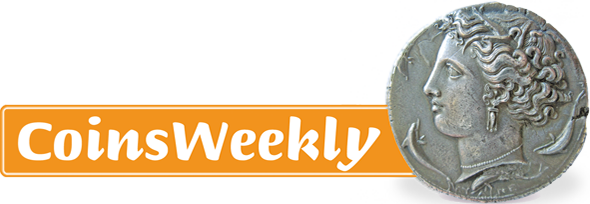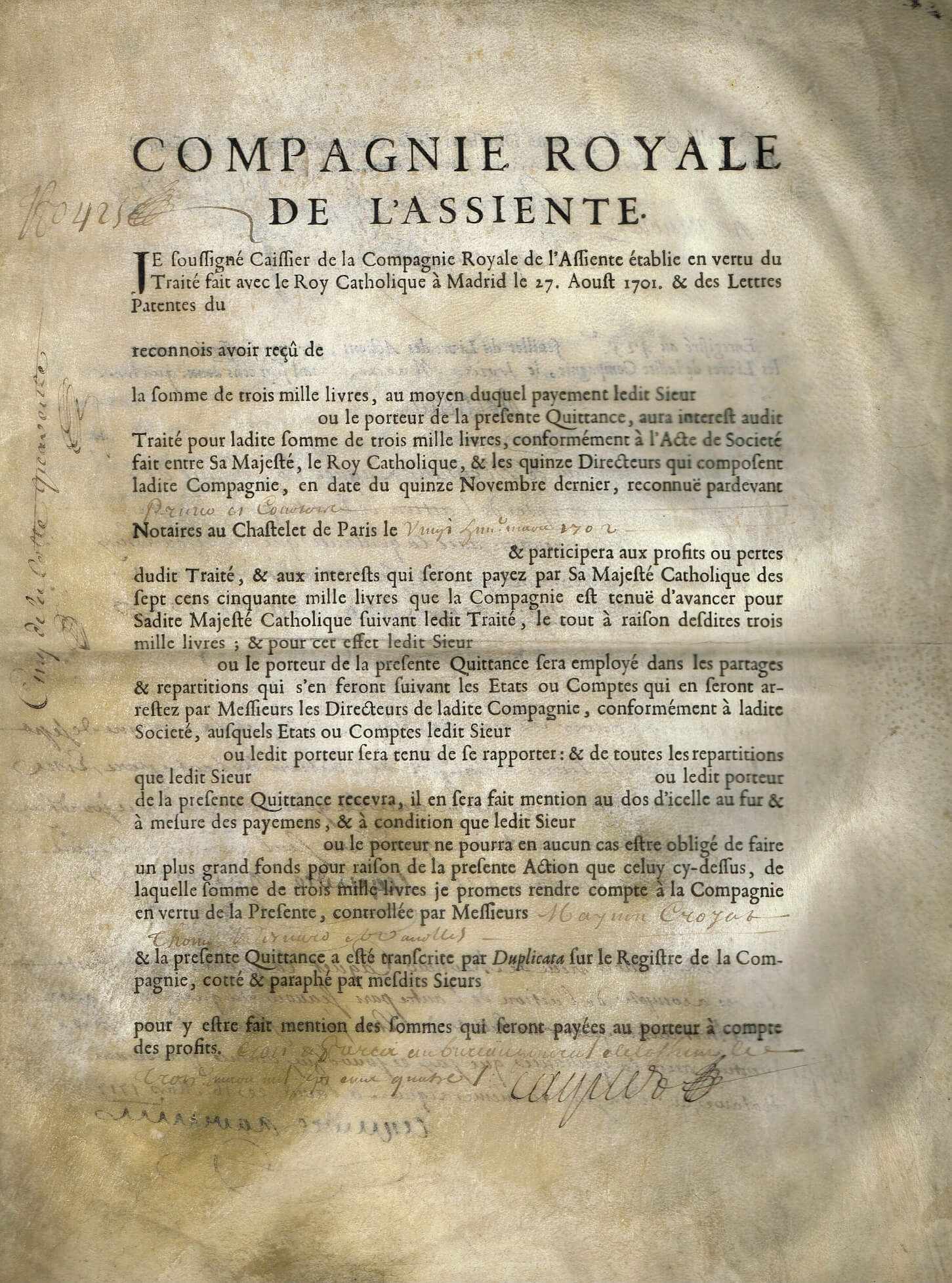Record of the week
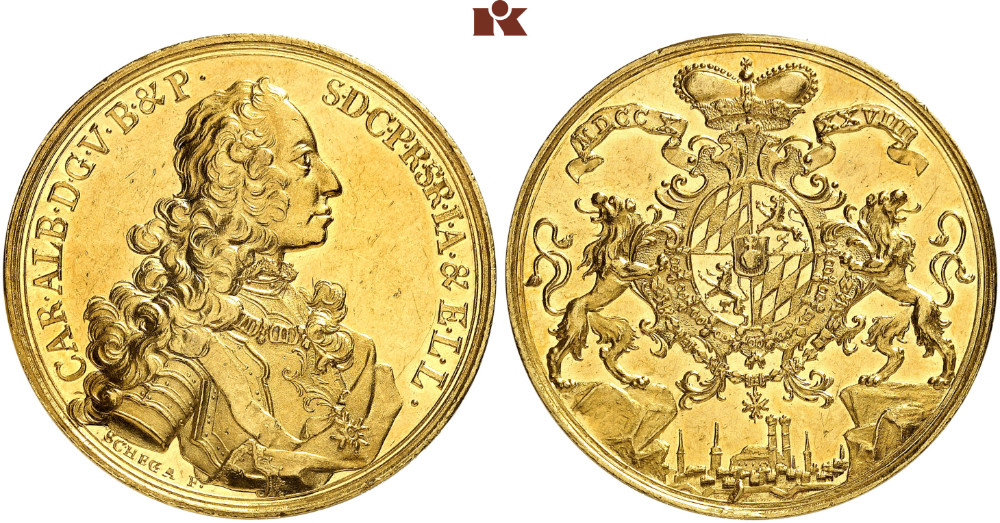
The Most Expensive: Bavarian Coins and Medals
Today, our record section takes us on a trip to Bavaria. We show you the most expensive coins and medals of the Duchy, Electorate and Kingdom of Bavaria. You can look forward to magnificent multiple gold coins!
all records
the most expensive coins
 https://new.coinsweekly.com/wp-content/uploads/2024/04/2024KW15Rekord_00.jpg
523
1000
Peter Terhorst
https://new.coinsweekly.com/wp-content/uploads/2023/01/logo-coinsweekly_590x204.png
Peter Terhorst2024-04-11 09:36:042024-04-11 09:48:28The Most Expensive: Bavarian Coins and Medals
https://new.coinsweekly.com/wp-content/uploads/2024/04/2024KW15Rekord_00.jpg
523
1000
Peter Terhorst
https://new.coinsweekly.com/wp-content/uploads/2023/01/logo-coinsweekly_590x204.png
Peter Terhorst2024-04-11 09:36:042024-04-11 09:48:28The Most Expensive: Bavarian Coins and Medals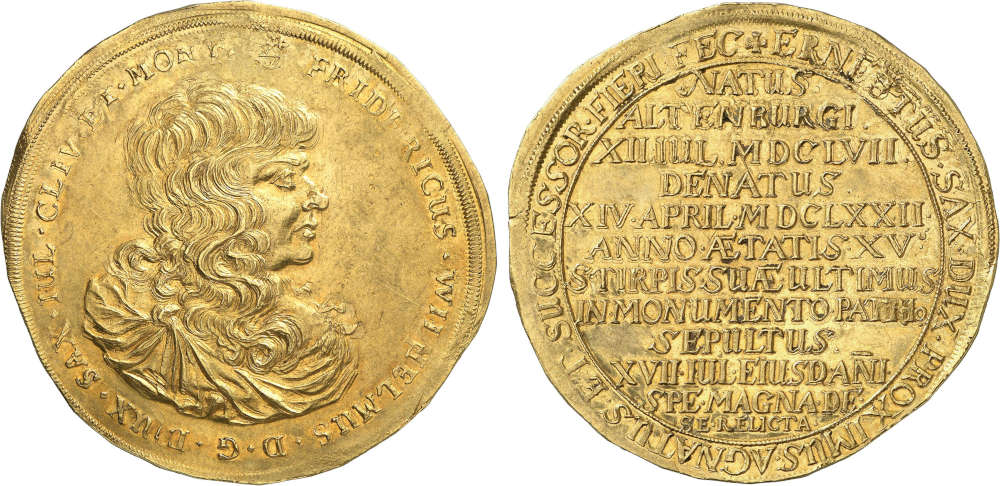 https://new.coinsweekly.com/wp-content/uploads/2023/12/2023KW49Rekord_07.jpg
486
1000
Peter Terhorst
https://new.coinsweekly.com/wp-content/uploads/2023/01/logo-coinsweekly_590x204.png
Peter Terhorst2023-12-07 10:43:552023-12-07 11:01:54The Most Expensive: Coins from the Ernestine Duchies
https://new.coinsweekly.com/wp-content/uploads/2023/12/2023KW49Rekord_07.jpg
486
1000
Peter Terhorst
https://new.coinsweekly.com/wp-content/uploads/2023/01/logo-coinsweekly_590x204.png
Peter Terhorst2023-12-07 10:43:552023-12-07 11:01:54The Most Expensive: Coins from the Ernestine Duchies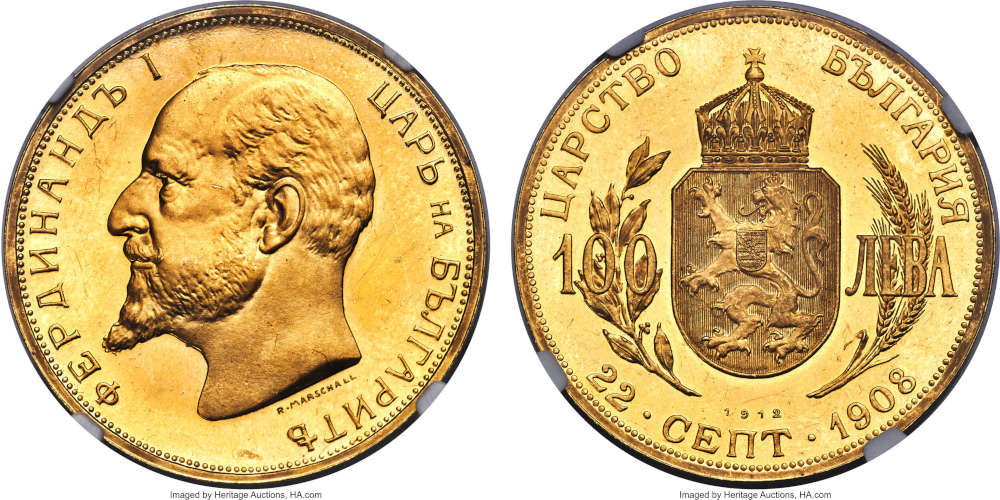 https://new.coinsweekly.com/wp-content/uploads/2023/11/2023KW47Rekord07.jpg
500
1000
Peter Terhorst
https://new.coinsweekly.com/wp-content/uploads/2023/01/logo-coinsweekly_590x204.png
Peter Terhorst2023-11-23 10:19:002023-11-23 10:43:43The Most Expensive: Coins and Medals from Bulgaria
https://new.coinsweekly.com/wp-content/uploads/2023/11/2023KW47Rekord07.jpg
500
1000
Peter Terhorst
https://new.coinsweekly.com/wp-content/uploads/2023/01/logo-coinsweekly_590x204.png
Peter Terhorst2023-11-23 10:19:002023-11-23 10:43:43The Most Expensive: Coins and Medals from Bulgaria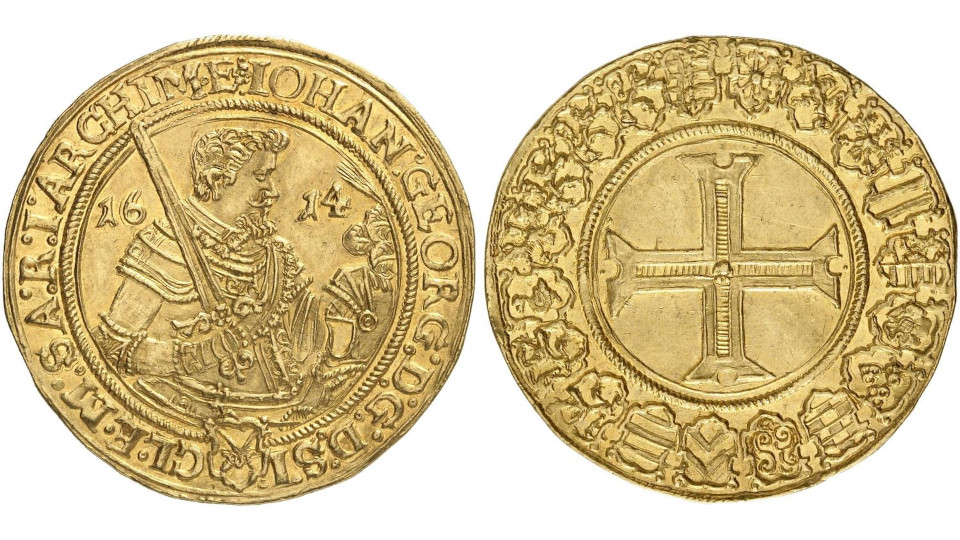 https://new.coinsweekly.com/wp-content/uploads/2022/10/02-38.jpg
540
960
https://new.coinsweekly.com/wp-content/uploads/2023/01/logo-coinsweekly_590x204.png
2022-10-27 08:47:072023-09-19 15:29:38The Most Expensive: Saxony-Albertine Coins
https://new.coinsweekly.com/wp-content/uploads/2022/10/02-38.jpg
540
960
https://new.coinsweekly.com/wp-content/uploads/2023/01/logo-coinsweekly_590x204.png
2022-10-27 08:47:072023-09-19 15:29:38The Most Expensive: Saxony-Albertine Coins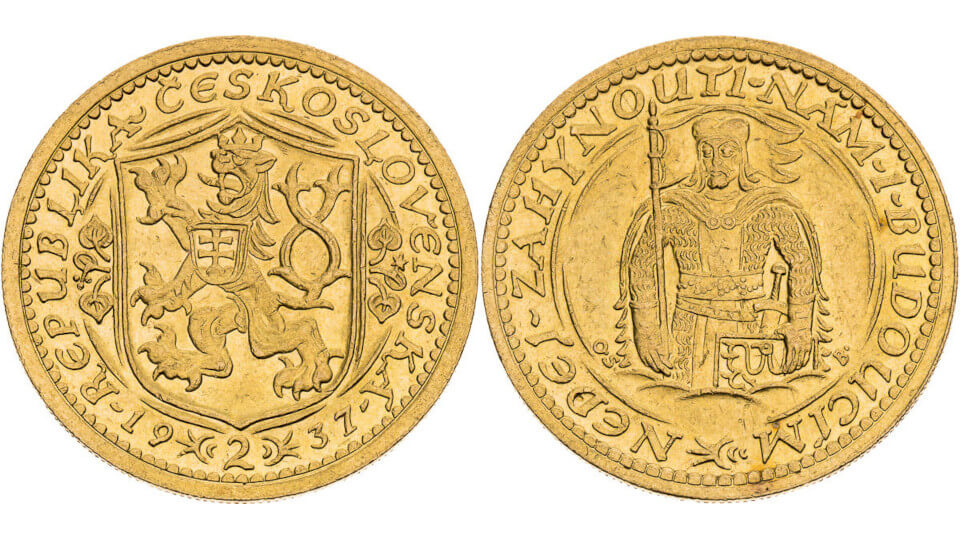 https://new.coinsweekly.com/wp-content/uploads/2022/08/08-2.jpg
540
960
https://new.coinsweekly.com/wp-content/uploads/2023/01/logo-coinsweekly_590x204.png
2022-08-25 13:56:052023-09-19 15:30:47The Most Expensive: Coins from Czechoslovakia
https://new.coinsweekly.com/wp-content/uploads/2022/08/08-2.jpg
540
960
https://new.coinsweekly.com/wp-content/uploads/2023/01/logo-coinsweekly_590x204.png
2022-08-25 13:56:052023-09-19 15:30:47The Most Expensive: Coins from Czechoslovakia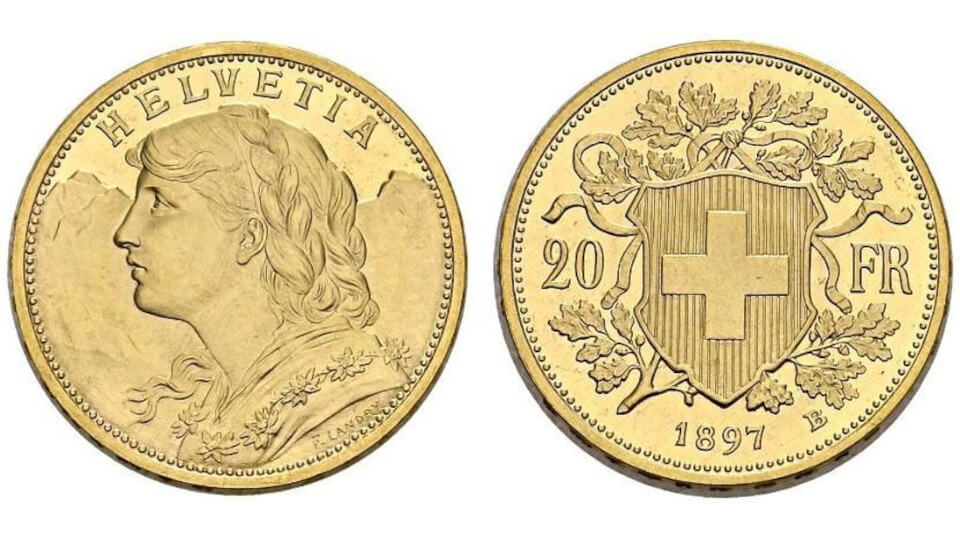 https://new.coinsweekly.com/wp-content/uploads/2022/06/06_image00833.jpg
540
960
https://new.coinsweekly.com/wp-content/uploads/2023/01/logo-coinsweekly_590x204.png
2022-06-16 13:56:482023-09-19 16:30:19The Most Expensive: Coins of the Swiss Confederation
https://new.coinsweekly.com/wp-content/uploads/2022/06/06_image00833.jpg
540
960
https://new.coinsweekly.com/wp-content/uploads/2023/01/logo-coinsweekly_590x204.png
2022-06-16 13:56:482023-09-19 16:30:19The Most Expensive: Coins of the Swiss Confederation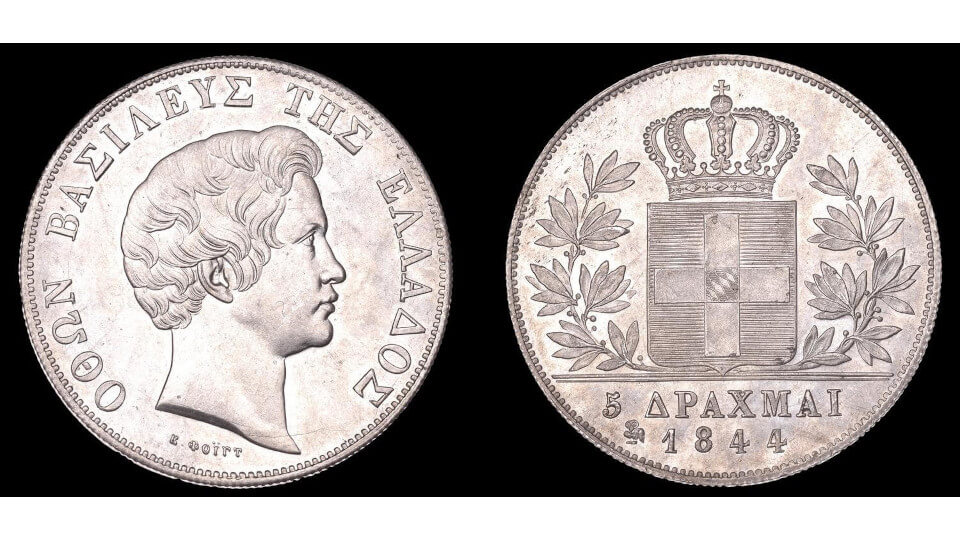 https://new.coinsweekly.com/wp-content/uploads/2022/05/03_image03396.jpg
540
960
https://new.coinsweekly.com/wp-content/uploads/2023/01/logo-coinsweekly_590x204.png
2022-05-26 13:56:322023-09-20 08:15:52The Most Expensive: Coins and Medals of Modern Greece
https://new.coinsweekly.com/wp-content/uploads/2022/05/03_image03396.jpg
540
960
https://new.coinsweekly.com/wp-content/uploads/2023/01/logo-coinsweekly_590x204.png
2022-05-26 13:56:322023-09-20 08:15:52The Most Expensive: Coins and Medals of Modern Greece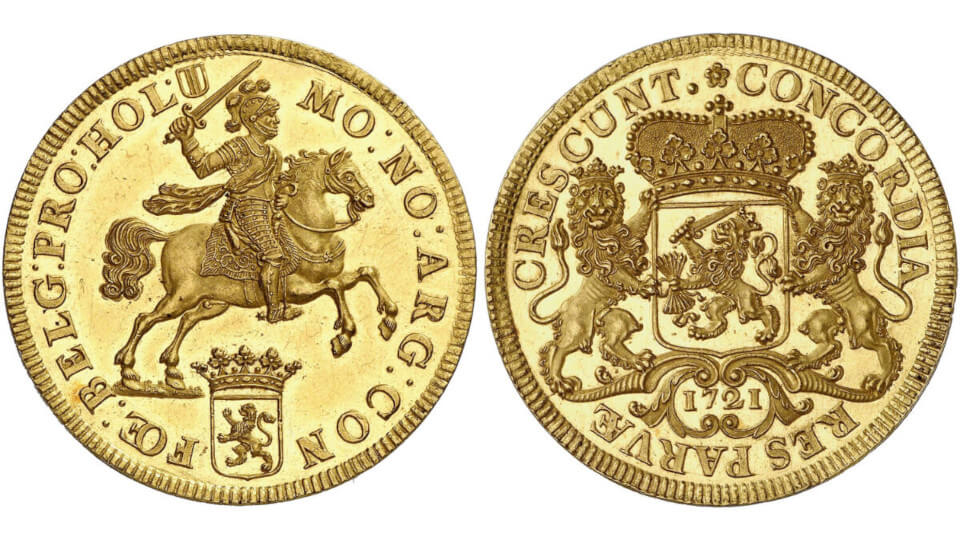 https://new.coinsweekly.com/wp-content/uploads/2022/04/06_image04412.jpg
540
960
https://new.coinsweekly.com/wp-content/uploads/2023/01/logo-coinsweekly_590x204.png
2022-04-21 13:56:072023-09-20 08:16:01The Most Expensive: Coins of the Netherlands
https://new.coinsweekly.com/wp-content/uploads/2022/04/06_image04412.jpg
540
960
https://new.coinsweekly.com/wp-content/uploads/2023/01/logo-coinsweekly_590x204.png
2022-04-21 13:56:072023-09-20 08:16:01The Most Expensive: Coins of the Netherlands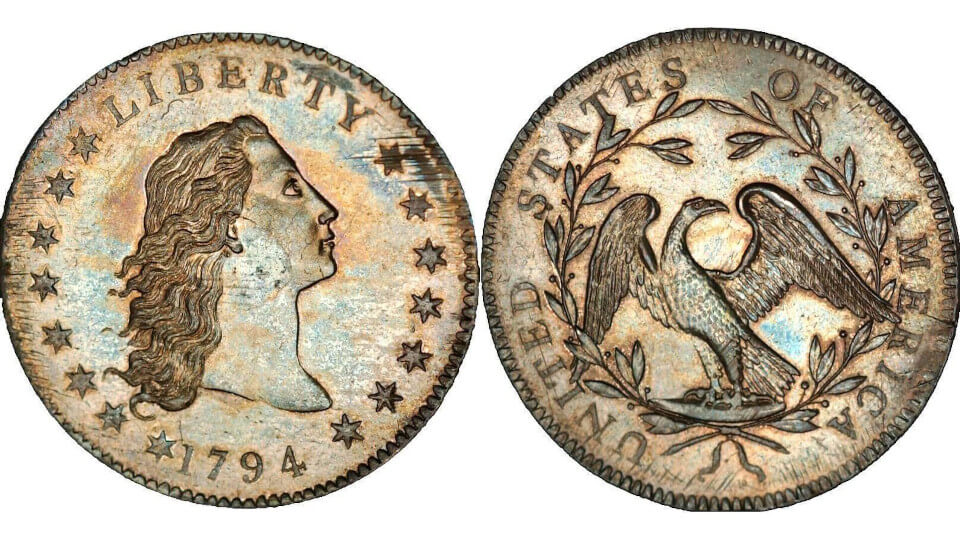 https://new.coinsweekly.com/wp-content/uploads/2022/03/09-6.jpg
540
960
https://new.coinsweekly.com/wp-content/uploads/2023/01/logo-coinsweekly_590x204.png
2022-03-17 14:00:112023-09-20 08:16:10The Most Expensive: Coins in the World
https://new.coinsweekly.com/wp-content/uploads/2022/03/09-6.jpg
540
960
https://new.coinsweekly.com/wp-content/uploads/2023/01/logo-coinsweekly_590x204.png
2022-03-17 14:00:112023-09-20 08:16:10The Most Expensive: Coins in the World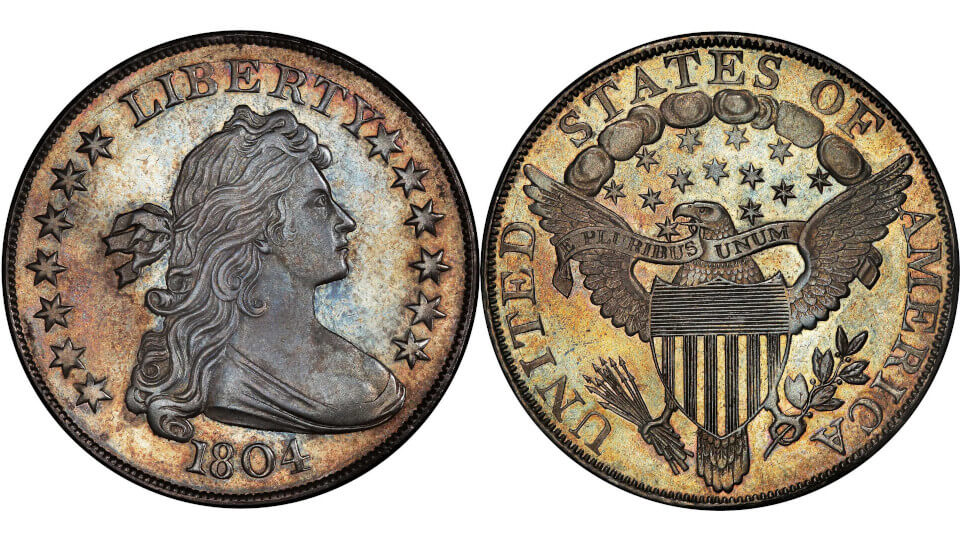 https://new.coinsweekly.com/wp-content/uploads/2022/01/07-6.jpg
540
960
https://new.coinsweekly.com/wp-content/uploads/2023/01/logo-coinsweekly_590x204.png
2022-01-27 13:56:072023-09-20 08:16:20The Most Expensive: Coins Sold in 2021
https://new.coinsweekly.com/wp-content/uploads/2022/01/07-6.jpg
540
960
https://new.coinsweekly.com/wp-content/uploads/2023/01/logo-coinsweekly_590x204.png
2022-01-27 13:56:072023-09-20 08:16:20The Most Expensive: Coins Sold in 2021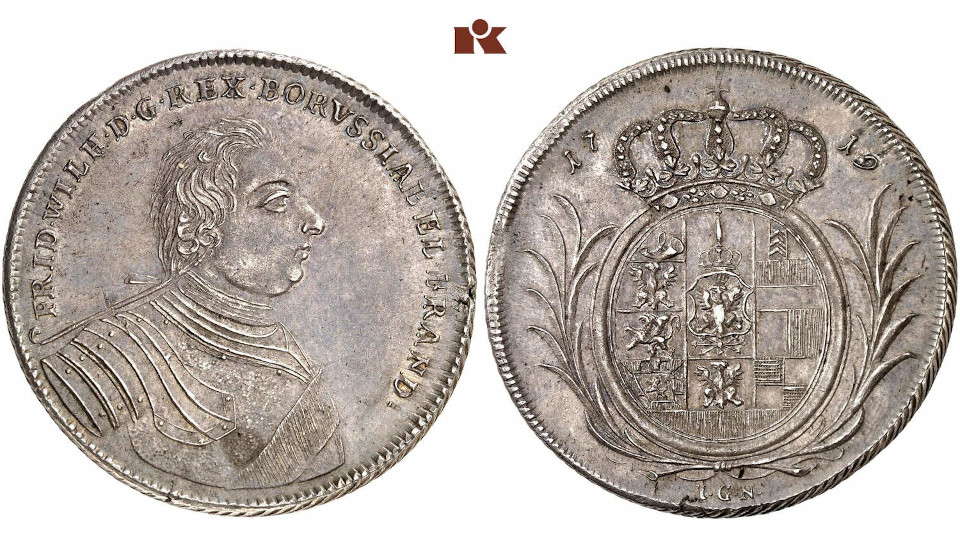 https://new.coinsweekly.com/wp-content/uploads/2020/10/09_image03264-2.jpg
540
960
https://new.coinsweekly.com/wp-content/uploads/2023/01/logo-coinsweekly_590x204.png
2021-10-14 13:56:032023-09-20 08:17:41The Most Expensive: Hohenzollern Coins and Medals
https://new.coinsweekly.com/wp-content/uploads/2020/10/09_image03264-2.jpg
540
960
https://new.coinsweekly.com/wp-content/uploads/2023/01/logo-coinsweekly_590x204.png
2021-10-14 13:56:032023-09-20 08:17:41The Most Expensive: Hohenzollern Coins and Medals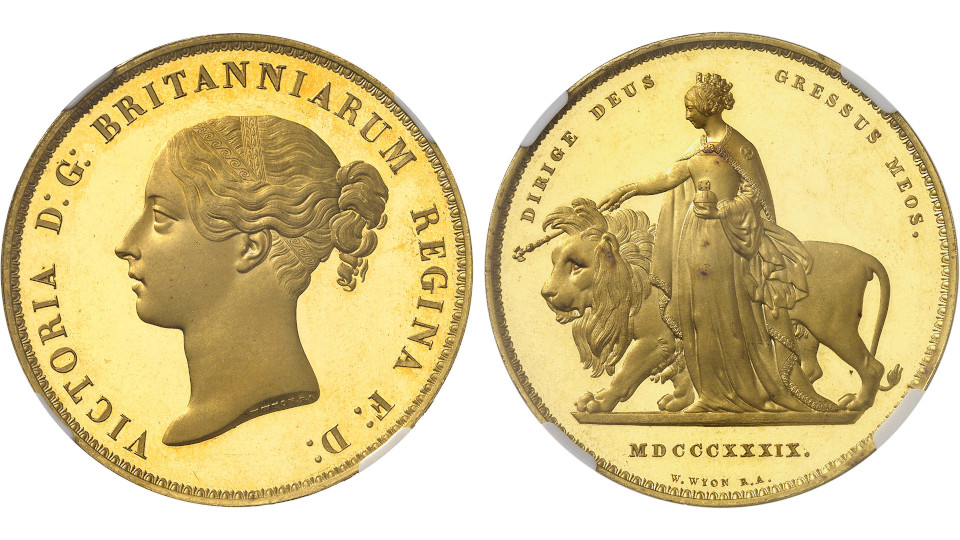 https://new.coinsweekly.com/wp-content/uploads/2021/03/08-4.jpg
540
960
https://new.coinsweekly.com/wp-content/uploads/2023/01/logo-coinsweekly_590x204.png
2021-04-08 13:56:412023-09-20 08:18:07The Most Expensive: British Coins
https://new.coinsweekly.com/wp-content/uploads/2021/03/08-4.jpg
540
960
https://new.coinsweekly.com/wp-content/uploads/2023/01/logo-coinsweekly_590x204.png
2021-04-08 13:56:412023-09-20 08:18:07The Most Expensive: British Coins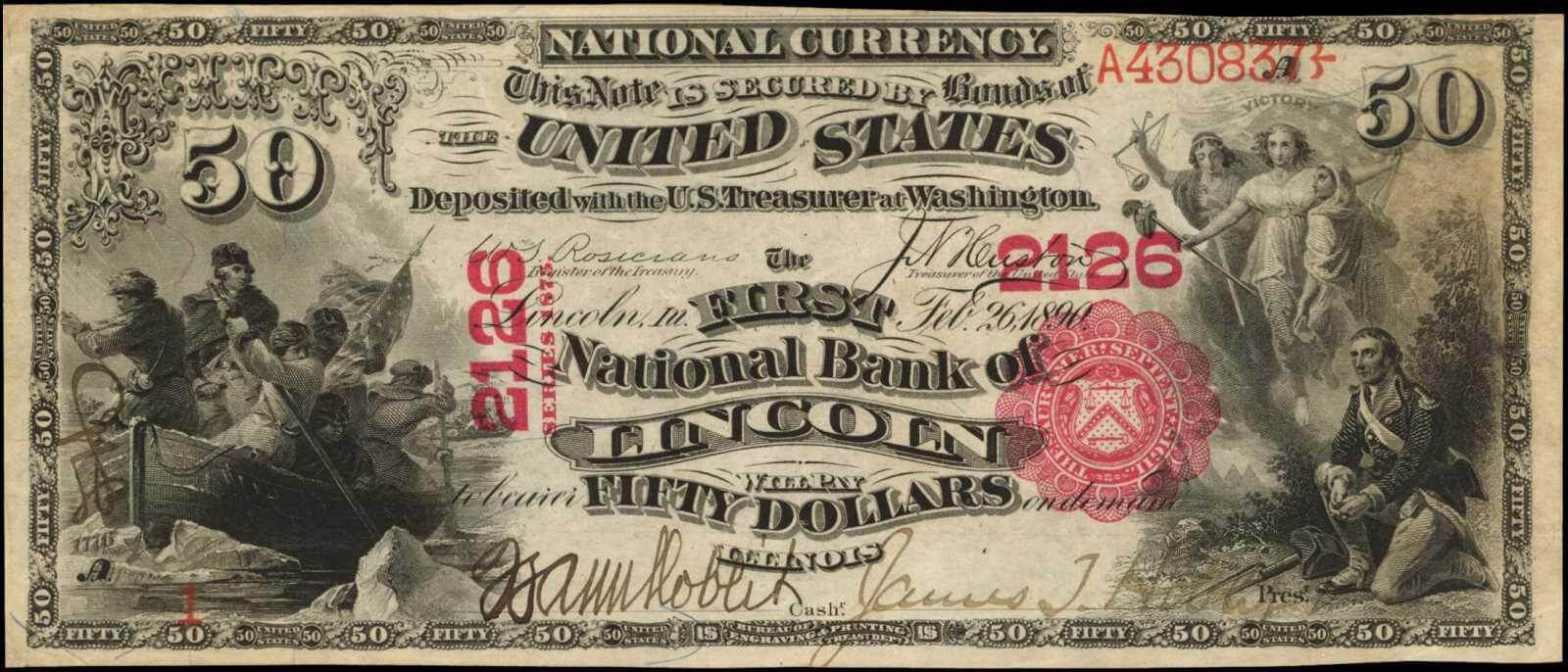 https://new.coinsweekly.com/wp-content/uploads/2021/01/03a.jpg
686
1600
https://new.coinsweekly.com/wp-content/uploads/2023/01/logo-coinsweekly_590x204.png
2021-01-28 13:56:522023-09-20 08:18:57The Most Expensive: US Banknotes Auctioned in 2020
https://new.coinsweekly.com/wp-content/uploads/2021/01/03a.jpg
686
1600
https://new.coinsweekly.com/wp-content/uploads/2023/01/logo-coinsweekly_590x204.png
2021-01-28 13:56:522023-09-20 08:18:57The Most Expensive: US Banknotes Auctioned in 2020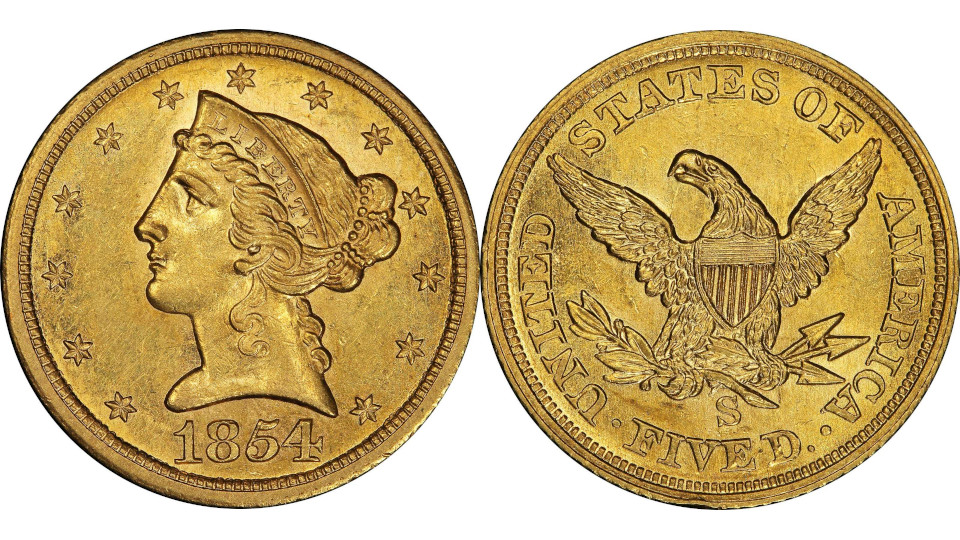 https://new.coinsweekly.com/wp-content/uploads/2021/01/08-6.jpg
540
960
https://new.coinsweekly.com/wp-content/uploads/2023/01/logo-coinsweekly_590x204.png
2021-01-21 13:56:072023-09-20 08:19:09The Most Expensive: US Coins Auctioned in 2020
https://new.coinsweekly.com/wp-content/uploads/2021/01/08-6.jpg
540
960
https://new.coinsweekly.com/wp-content/uploads/2023/01/logo-coinsweekly_590x204.png
2021-01-21 13:56:072023-09-20 08:19:09The Most Expensive: US Coins Auctioned in 2020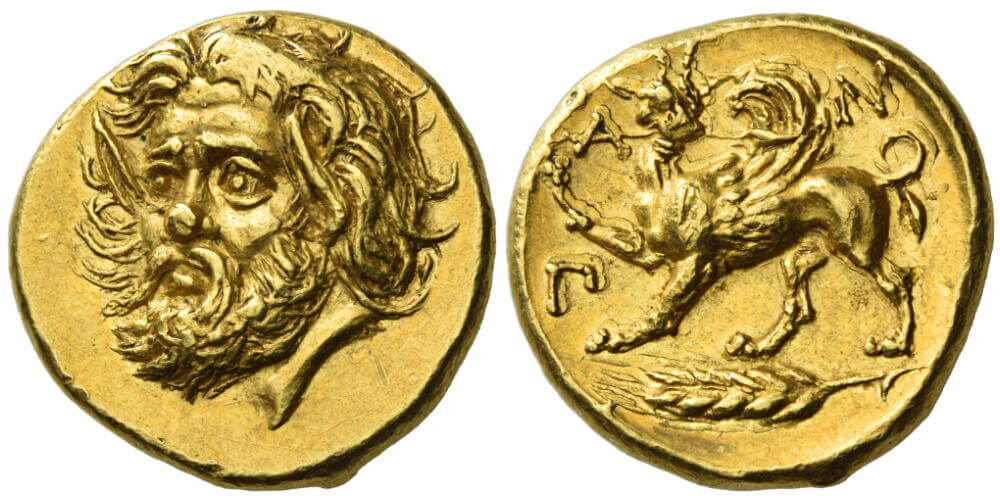 https://new.coinsweekly.com/wp-content/uploads/2020/11/PantikapaionStater-1.jpg
500
1000
https://new.coinsweekly.com/wp-content/uploads/2023/01/logo-coinsweekly_590x204.png
2020-11-19 13:56:302023-09-19 15:37:32The Most Expensive: Ancient Gold Coins
https://new.coinsweekly.com/wp-content/uploads/2020/11/PantikapaionStater-1.jpg
500
1000
https://new.coinsweekly.com/wp-content/uploads/2023/01/logo-coinsweekly_590x204.png
2020-11-19 13:56:302023-09-19 15:37:32The Most Expensive: Ancient Gold Coins https://new.coinsweekly.com/wp-content/uploads/2020/11/09-1.jpg
540
960
https://new.coinsweekly.com/wp-content/uploads/2023/01/logo-coinsweekly_590x204.png
2020-11-12 13:56:562023-09-20 08:20:09The Most Expensive: Coins of the German Empire
https://new.coinsweekly.com/wp-content/uploads/2020/11/09-1.jpg
540
960
https://new.coinsweekly.com/wp-content/uploads/2023/01/logo-coinsweekly_590x204.png
2020-11-12 13:56:562023-09-20 08:20:09The Most Expensive: Coins of the German Empire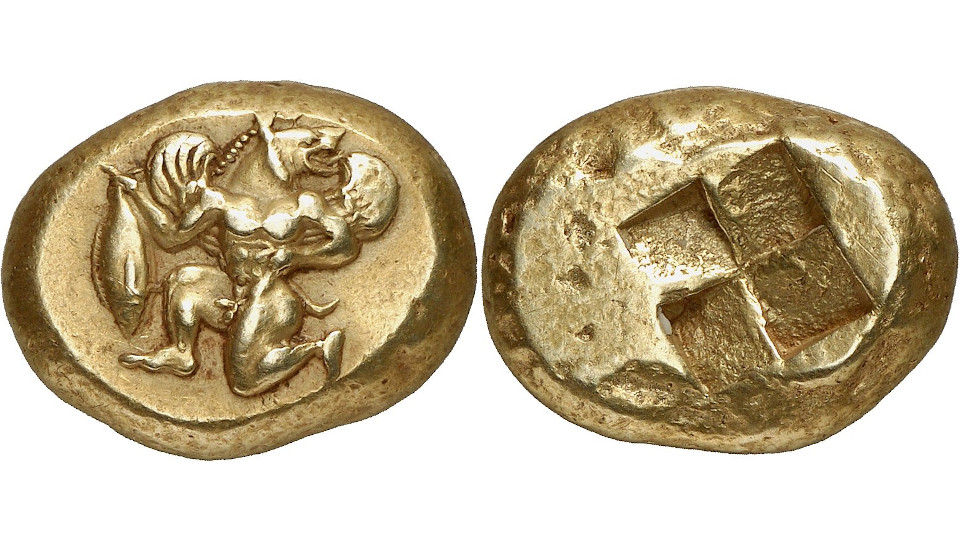 https://new.coinsweekly.com/wp-content/uploads/2020/10/02-20.jpg
540
960
https://new.coinsweekly.com/wp-content/uploads/2023/01/logo-coinsweekly_590x204.png
2020-10-22 13:56:092023-09-20 08:20:18The Most Expensive: Electrum Coins
https://new.coinsweekly.com/wp-content/uploads/2020/10/02-20.jpg
540
960
https://new.coinsweekly.com/wp-content/uploads/2023/01/logo-coinsweekly_590x204.png
2020-10-22 13:56:092023-09-20 08:20:18The Most Expensive: Electrum Coins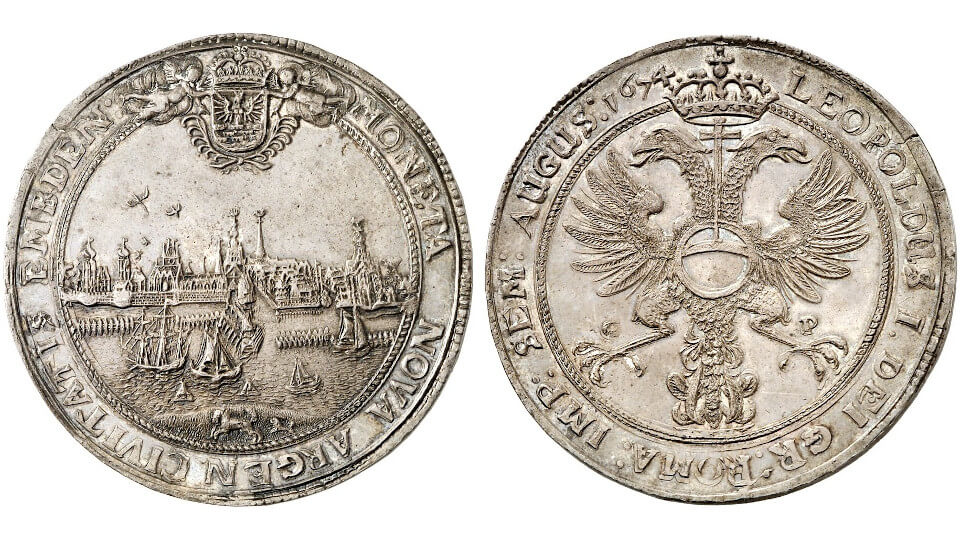 https://new.coinsweekly.com/wp-content/uploads/2020/10/01-18.jpg
540
960
https://new.coinsweekly.com/wp-content/uploads/2023/01/logo-coinsweekly_590x204.png
2020-10-15 13:56:342023-09-20 08:20:27The Most Expensive: Double Talers of the Holy Roman Empire
https://new.coinsweekly.com/wp-content/uploads/2020/10/01-18.jpg
540
960
https://new.coinsweekly.com/wp-content/uploads/2023/01/logo-coinsweekly_590x204.png
2020-10-15 13:56:342023-09-20 08:20:27The Most Expensive: Double Talers of the Holy Roman Empire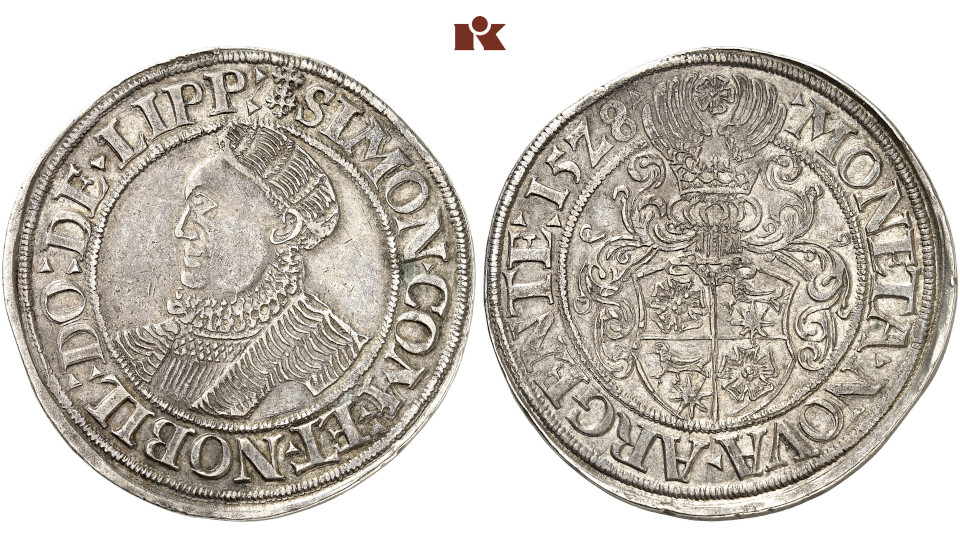 https://new.coinsweekly.com/wp-content/uploads/2020/07/10image00311-1.jpg
540
960
https://new.coinsweekly.com/wp-content/uploads/2023/01/logo-coinsweekly_590x204.png
2020-10-08 13:56:292023-09-20 08:20:38The Most Expensive: Talers of the Holy Roman Empire
https://new.coinsweekly.com/wp-content/uploads/2020/07/10image00311-1.jpg
540
960
https://new.coinsweekly.com/wp-content/uploads/2023/01/logo-coinsweekly_590x204.png
2020-10-08 13:56:292023-09-20 08:20:38The Most Expensive: Talers of the Holy Roman Empire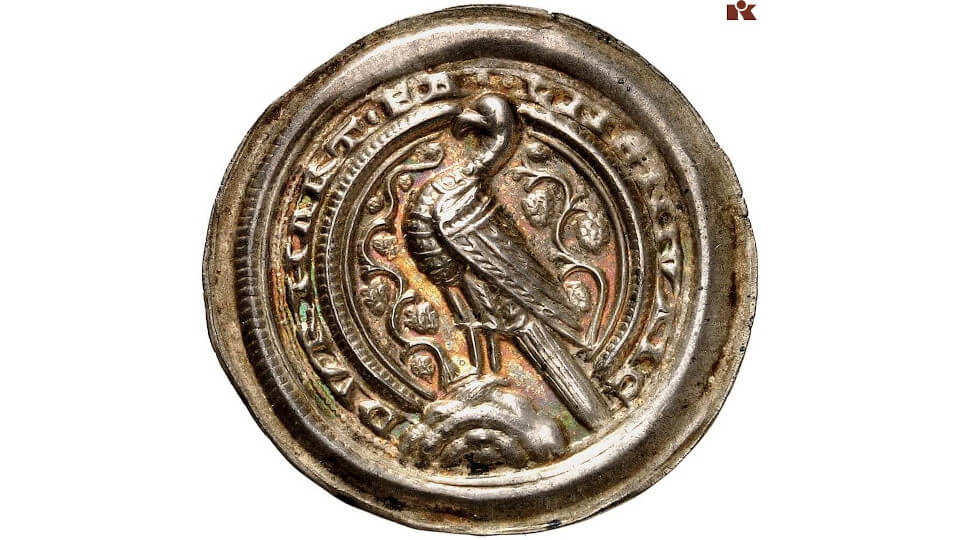 https://new.coinsweekly.com/wp-content/uploads/2020/10/07-2.jpg
540
960
https://new.coinsweekly.com/wp-content/uploads/2023/01/logo-coinsweekly_590x204.png
2020-10-01 13:56:442023-09-20 08:21:29The Most Expensive: Medieval Bracteates
https://new.coinsweekly.com/wp-content/uploads/2020/10/07-2.jpg
540
960
https://new.coinsweekly.com/wp-content/uploads/2023/01/logo-coinsweekly_590x204.png
2020-10-01 13:56:442023-09-20 08:21:29The Most Expensive: Medieval Bracteates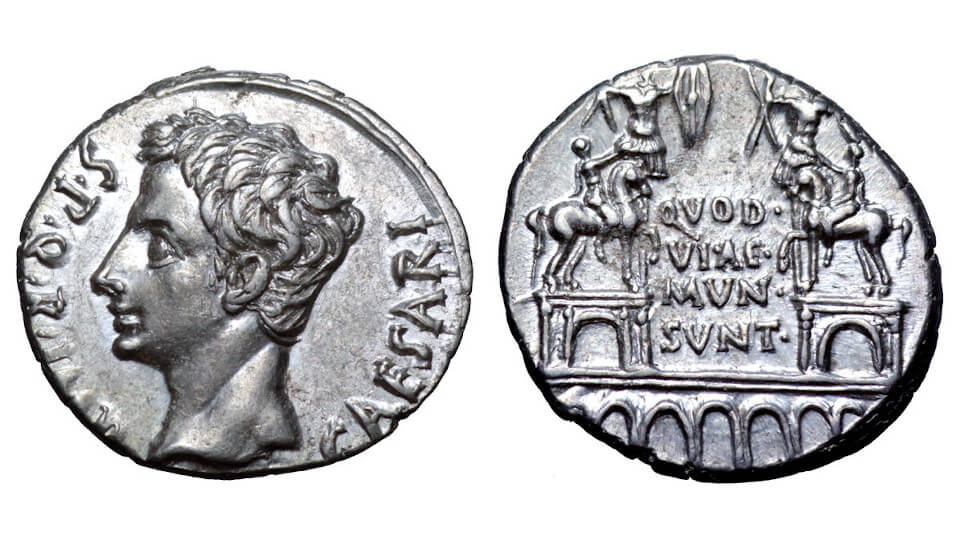 https://new.coinsweekly.com/wp-content/uploads/2020/09/03-15.jpg
540
960
https://new.coinsweekly.com/wp-content/uploads/2023/01/logo-coinsweekly_590x204.png
2020-09-17 13:56:542023-09-20 08:21:38The Most Expensive: Roman Denarii
https://new.coinsweekly.com/wp-content/uploads/2020/09/03-15.jpg
540
960
https://new.coinsweekly.com/wp-content/uploads/2023/01/logo-coinsweekly_590x204.png
2020-09-17 13:56:542023-09-20 08:21:38The Most Expensive: Roman Denarii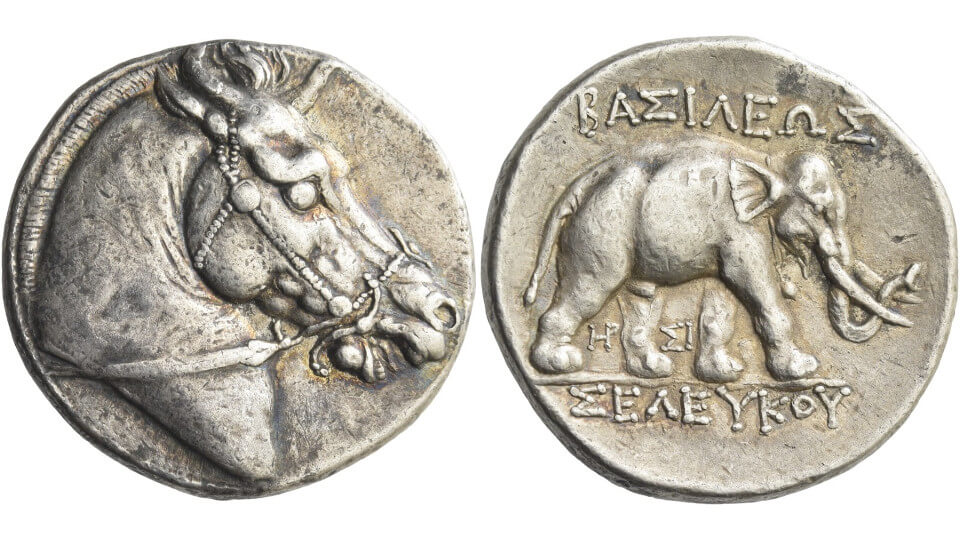 https://new.coinsweekly.com/wp-content/uploads/2020/09/01-11.jpg
540
960
https://new.coinsweekly.com/wp-content/uploads/2023/01/logo-coinsweekly_590x204.png
2020-09-10 13:56:142023-09-20 08:21:47The Most Expensive: Tetradrachms
https://new.coinsweekly.com/wp-content/uploads/2020/09/01-11.jpg
540
960
https://new.coinsweekly.com/wp-content/uploads/2023/01/logo-coinsweekly_590x204.png
2020-09-10 13:56:142023-09-20 08:21:47The Most Expensive: Tetradrachms https://new.coinsweekly.com/wp-content/uploads/2020/09/08.jpg
540
960
https://new.coinsweekly.com/wp-content/uploads/2023/01/logo-coinsweekly_590x204.png
2020-09-03 13:56:262023-09-20 08:22:33The Most Expensive: Russian Coins
https://new.coinsweekly.com/wp-content/uploads/2020/09/08.jpg
540
960
https://new.coinsweekly.com/wp-content/uploads/2023/01/logo-coinsweekly_590x204.png
2020-09-03 13:56:262023-09-20 08:22:33The Most Expensive: Russian Coins https://new.coinsweekly.com/wp-content/uploads/2020/08/10-2.jpg
540
960
https://new.coinsweekly.com/wp-content/uploads/2023/01/logo-coinsweekly_590x204.png
2020-08-27 13:56:372023-09-20 08:22:42The Most Expensive: Sestertii
https://new.coinsweekly.com/wp-content/uploads/2020/08/10-2.jpg
540
960
https://new.coinsweekly.com/wp-content/uploads/2023/01/logo-coinsweekly_590x204.png
2020-08-27 13:56:372023-09-20 08:22:42The Most Expensive: Sestertii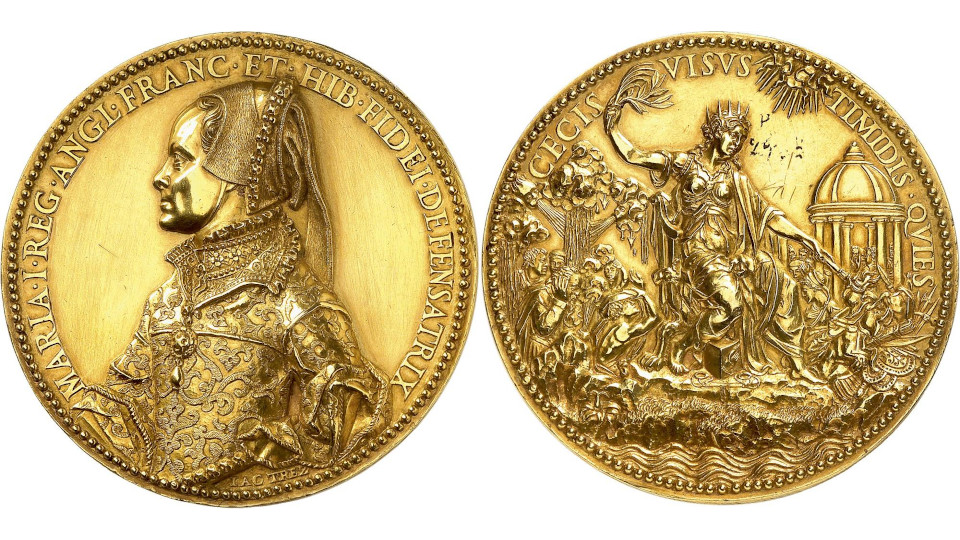 https://new.coinsweekly.com/wp-content/uploads/2020/07/10image00196.jpg
540
960
https://new.coinsweekly.com/wp-content/uploads/2023/01/logo-coinsweekly_590x204.png
2020-07-30 13:56:452023-09-20 08:22:51The Most Expensive: Renaissance Medals
https://new.coinsweekly.com/wp-content/uploads/2020/07/10image00196.jpg
540
960
https://new.coinsweekly.com/wp-content/uploads/2023/01/logo-coinsweekly_590x204.png
2020-07-30 13:56:452023-09-20 08:22:51The Most Expensive: Renaissance Medals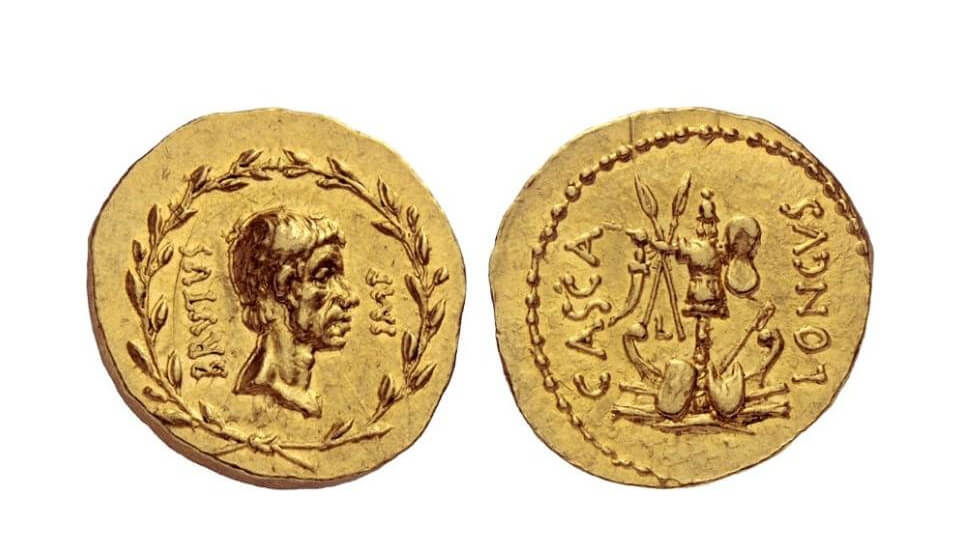 https://new.coinsweekly.com/wp-content/uploads/2020/07/10image00023-1.jpg
540
960
https://new.coinsweekly.com/wp-content/uploads/2023/01/logo-coinsweekly_590x204.png
2020-07-16 13:54:192023-09-20 08:23:55The Most Expensive: Aurei
https://new.coinsweekly.com/wp-content/uploads/2020/07/10image00023-1.jpg
540
960
https://new.coinsweekly.com/wp-content/uploads/2023/01/logo-coinsweekly_590x204.png
2020-07-16 13:54:192023-09-20 08:23:55The Most Expensive: Aureithe most beautiful coins
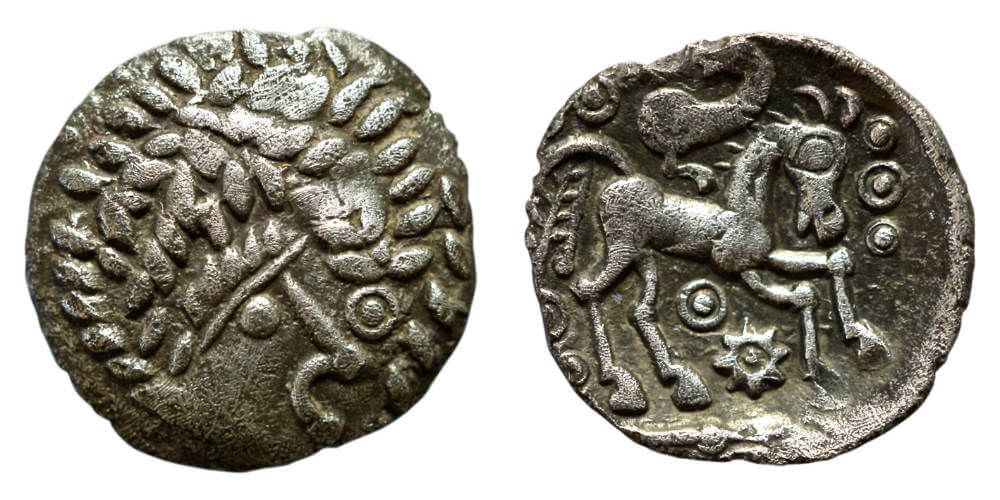 https://new.coinsweekly.com/wp-content/uploads/2023/11/2023KW44Rekord_00.jpg
500
1000
Peter Terhorst
https://new.coinsweekly.com/wp-content/uploads/2023/01/logo-coinsweekly_590x204.png
Peter Terhorst2023-11-02 14:03:572023-11-02 14:09:33The Most Beautiful: British Celtic Coins Selected by Tim Wright
https://new.coinsweekly.com/wp-content/uploads/2023/11/2023KW44Rekord_00.jpg
500
1000
Peter Terhorst
https://new.coinsweekly.com/wp-content/uploads/2023/01/logo-coinsweekly_590x204.png
Peter Terhorst2023-11-02 14:03:572023-11-02 14:09:33The Most Beautiful: British Celtic Coins Selected by Tim Wright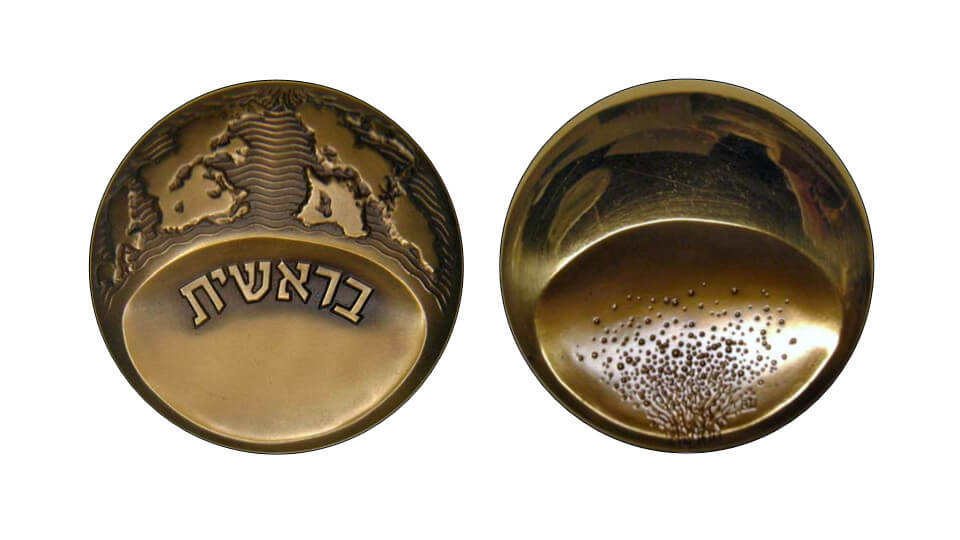 https://new.coinsweekly.com/wp-content/uploads/2020/07/08-3.jpg
540
960
https://new.coinsweekly.com/wp-content/uploads/2023/01/logo-coinsweekly_590x204.png
2020-07-09 13:56:262023-09-20 08:24:11The Most Beautiful: Judaic Medals Selected by Mel Wacks
https://new.coinsweekly.com/wp-content/uploads/2020/07/08-3.jpg
540
960
https://new.coinsweekly.com/wp-content/uploads/2023/01/logo-coinsweekly_590x204.png
2020-07-09 13:56:262023-09-20 08:24:11The Most Beautiful: Judaic Medals Selected by Mel Wacks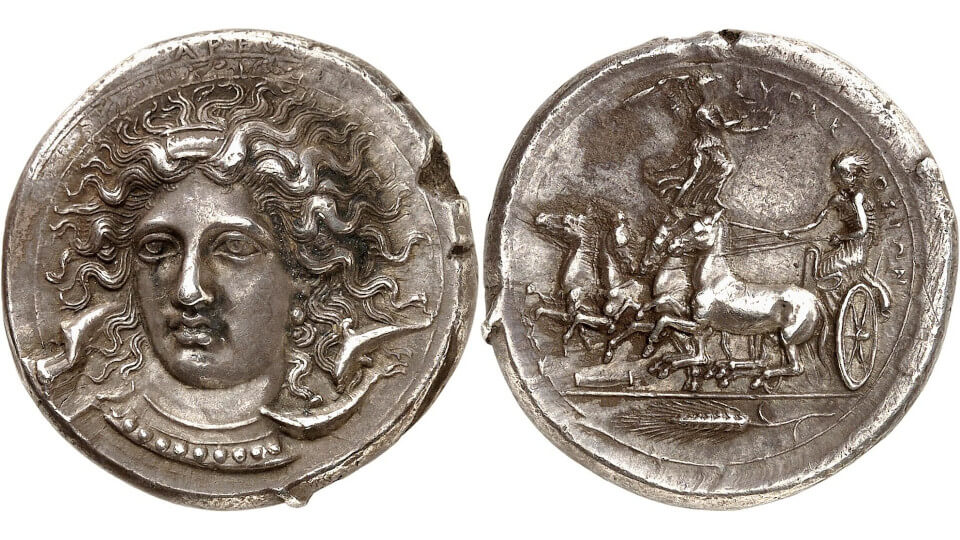 https://new.coinsweekly.com/wp-content/uploads/2020/06/01Syracuse-2.jpg
540
960
https://new.coinsweekly.com/wp-content/uploads/2023/01/logo-coinsweekly_590x204.png
2020-06-11 13:56:182023-09-20 08:24:25The Most Beautiful: Coins Featuring Women Selected by Alain Baron and Philippe Veuve
https://new.coinsweekly.com/wp-content/uploads/2020/06/01Syracuse-2.jpg
540
960
https://new.coinsweekly.com/wp-content/uploads/2023/01/logo-coinsweekly_590x204.png
2020-06-11 13:56:182023-09-20 08:24:25The Most Beautiful: Coins Featuring Women Selected by Alain Baron and Philippe Veuve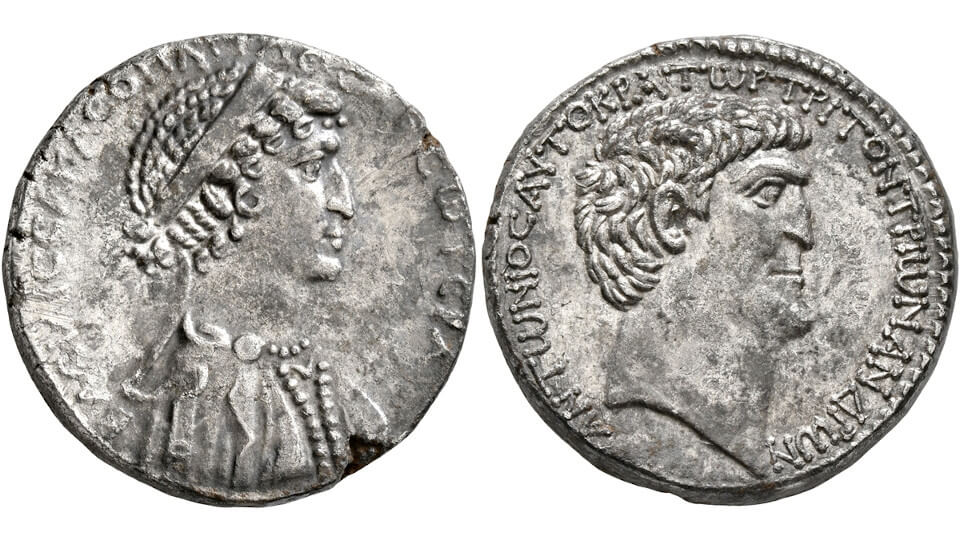 https://new.coinsweekly.com/wp-content/uploads/2020/05/03_00588q00.jpg
540
960
https://new.coinsweekly.com/wp-content/uploads/2023/01/logo-coinsweekly_590x204.png
2020-05-28 13:56:432023-09-20 08:25:39The Most Beautiful: Roman Coins Selected by Yves Gunzenreiner
https://new.coinsweekly.com/wp-content/uploads/2020/05/03_00588q00.jpg
540
960
https://new.coinsweekly.com/wp-content/uploads/2023/01/logo-coinsweekly_590x204.png
2020-05-28 13:56:432023-09-20 08:25:39The Most Beautiful: Roman Coins Selected by Yves Gunzenreiner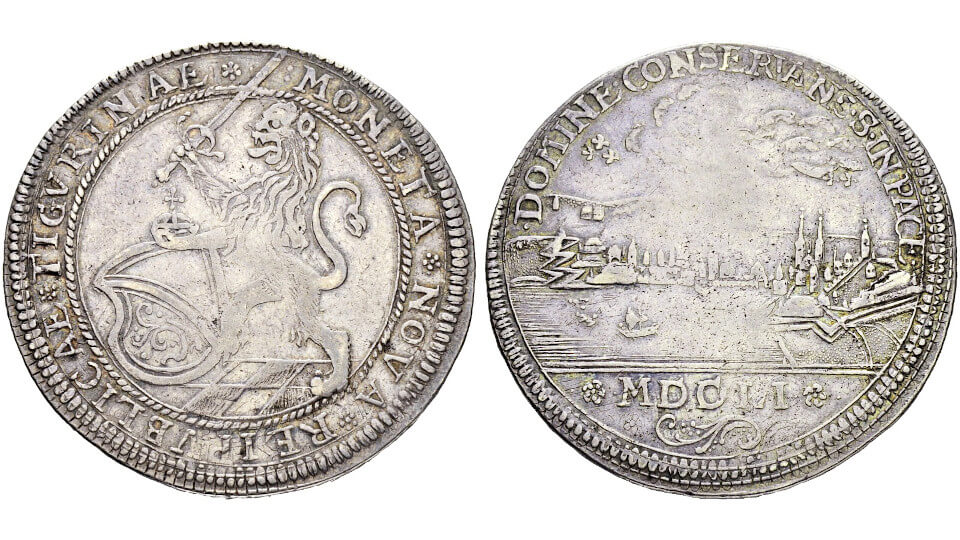 https://new.coinsweekly.com/wp-content/uploads/2020/05/09-5.jpg
540
960
https://new.coinsweekly.com/wp-content/uploads/2023/01/logo-coinsweekly_590x204.png
2020-05-21 13:56:192023-09-19 16:07:32The Most Beautiful: Talers from the City of Zurich, selected by Ruedi Kunzmann
https://new.coinsweekly.com/wp-content/uploads/2020/05/09-5.jpg
540
960
https://new.coinsweekly.com/wp-content/uploads/2023/01/logo-coinsweekly_590x204.png
2020-05-21 13:56:192023-09-19 16:07:32The Most Beautiful: Talers from the City of Zurich, selected by Ruedi Kunzmann https://new.coinsweekly.com/wp-content/uploads/2020/05/02_set-mit-5-x-25-4562431-O.jpg
540
960
https://new.coinsweekly.com/wp-content/uploads/2023/01/logo-coinsweekly_590x204.png
2020-05-14 13:56:042023-09-06 11:46:18The Most Beautiful: Chinese Coins After 1970 Selected by Werner Höpker
https://new.coinsweekly.com/wp-content/uploads/2020/05/02_set-mit-5-x-25-4562431-O.jpg
540
960
https://new.coinsweekly.com/wp-content/uploads/2023/01/logo-coinsweekly_590x204.png
2020-05-14 13:56:042023-09-06 11:46:18The Most Beautiful: Chinese Coins After 1970 Selected by Werner Höpker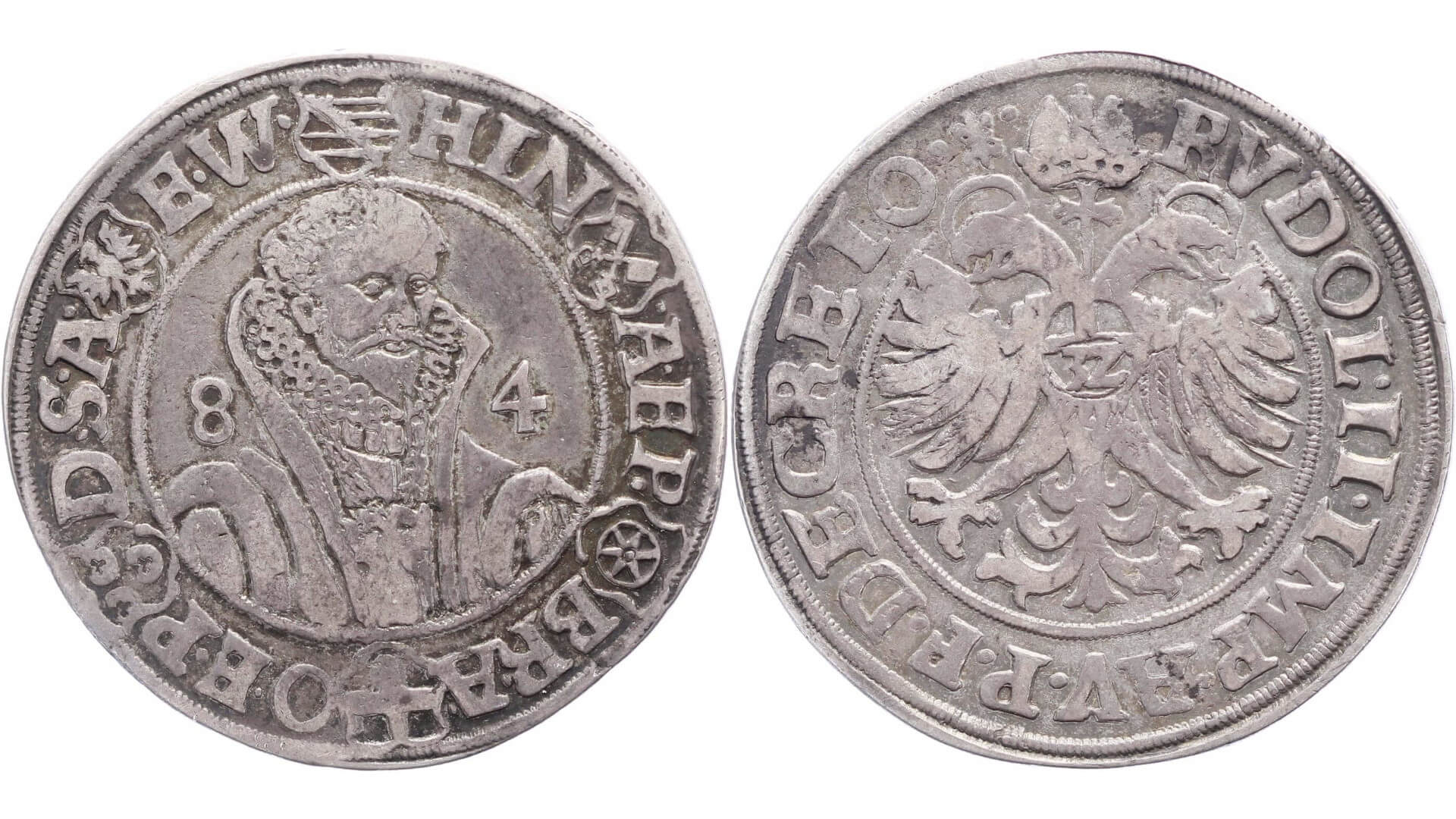 https://new.coinsweekly.com/wp-content/uploads/2020/05/01a-1.jpg
1080
1920
https://new.coinsweekly.com/wp-content/uploads/2023/01/logo-coinsweekly_590x204.png
2020-05-07 13:56:002023-09-20 08:26:56The Most Beautiful: Coins of Bremen Selected by Claus Müller
https://new.coinsweekly.com/wp-content/uploads/2020/05/01a-1.jpg
1080
1920
https://new.coinsweekly.com/wp-content/uploads/2023/01/logo-coinsweekly_590x204.png
2020-05-07 13:56:002023-09-20 08:26:56The Most Beautiful: Coins of Bremen Selected by Claus Müller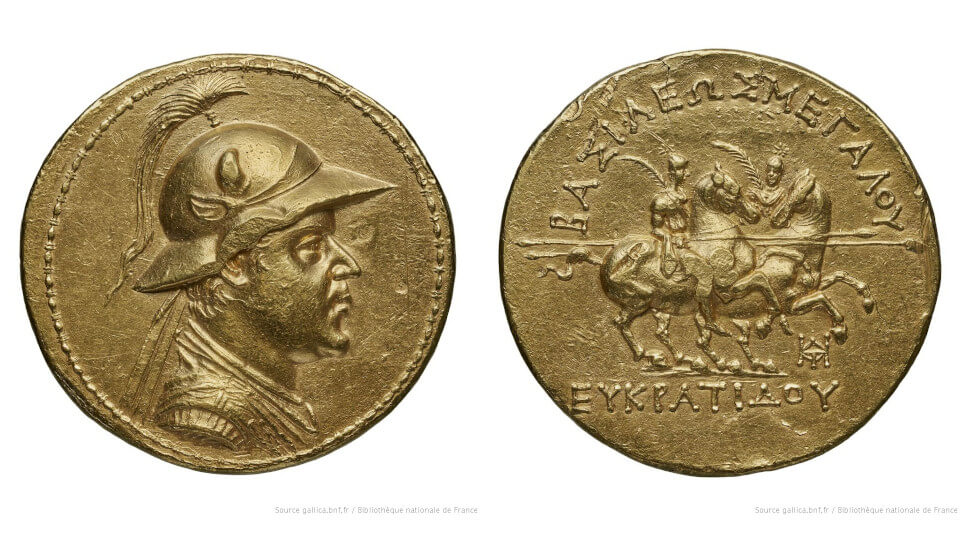 https://new.coinsweekly.com/wp-content/uploads/2020/04/02-32.jpg
540
960
https://new.coinsweekly.com/wp-content/uploads/2023/01/logo-coinsweekly_590x204.png
2020-04-30 13:56:252023-09-20 08:27:07The Most Beautiful: Coins from the Bibliothèque nationale de France. Selected by Frédérique Duyrat
https://new.coinsweekly.com/wp-content/uploads/2020/04/02-32.jpg
540
960
https://new.coinsweekly.com/wp-content/uploads/2023/01/logo-coinsweekly_590x204.png
2020-04-30 13:56:252023-09-20 08:27:07The Most Beautiful: Coins from the Bibliothèque nationale de France. Selected by Frédérique Duyrat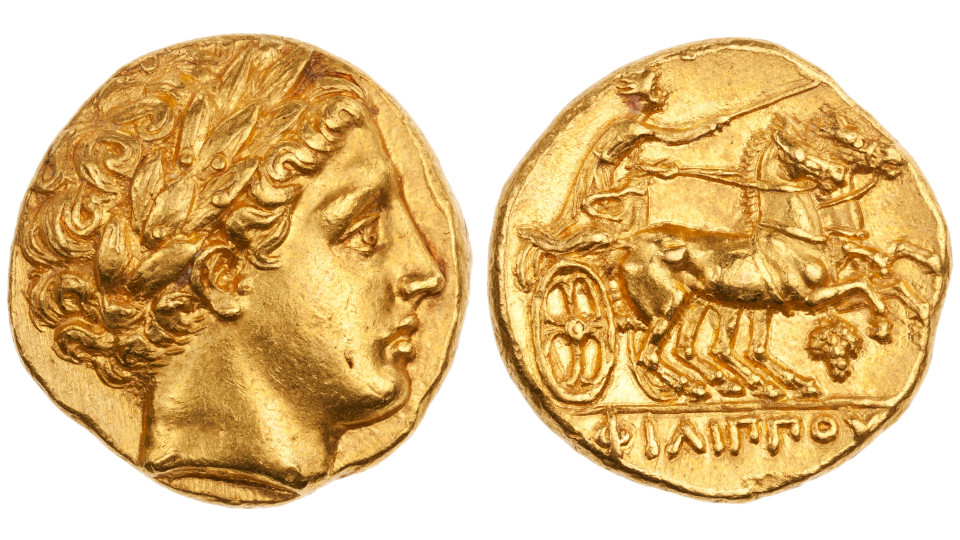 https://new.coinsweekly.com/wp-content/uploads/2020/04/01-13-1.jpg
540
960
https://new.coinsweekly.com/wp-content/uploads/2023/01/logo-coinsweekly_590x204.png
2020-04-16 13:56:492023-09-20 08:27:20The Most Beautiful: Hellenistic Royal Coins. Selected by Peter van Alfen
https://new.coinsweekly.com/wp-content/uploads/2020/04/01-13-1.jpg
540
960
https://new.coinsweekly.com/wp-content/uploads/2023/01/logo-coinsweekly_590x204.png
2020-04-16 13:56:492023-09-20 08:27:20The Most Beautiful: Hellenistic Royal Coins. Selected by Peter van Alfen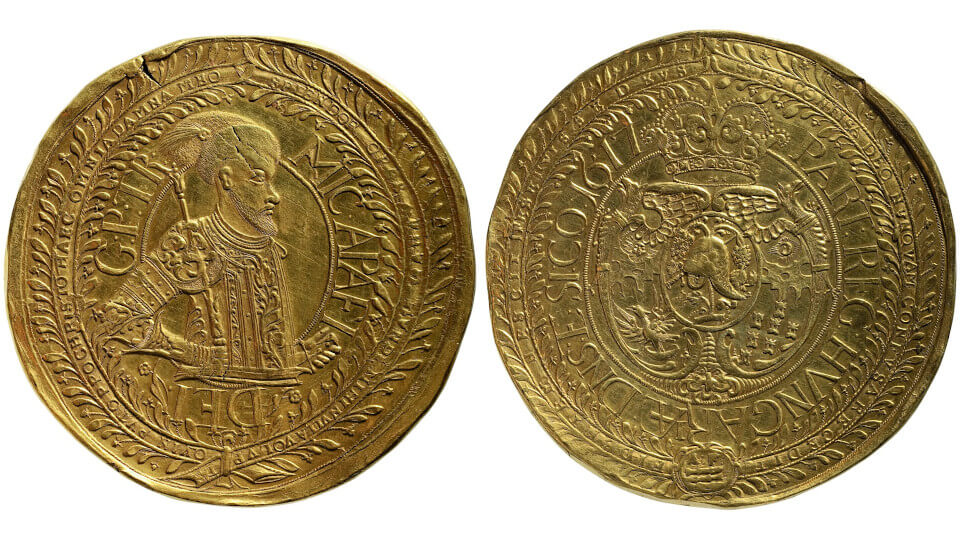 https://new.coinsweekly.com/wp-content/uploads/2020/04/02-12.jpg
540
960
https://new.coinsweekly.com/wp-content/uploads/2023/01/logo-coinsweekly_590x204.png
2020-04-09 13:56:162023-09-20 08:28:26The Most Beautiful: Coins in Vienna. Selected by Curators of the Coin Collection
https://new.coinsweekly.com/wp-content/uploads/2020/04/02-12.jpg
540
960
https://new.coinsweekly.com/wp-content/uploads/2023/01/logo-coinsweekly_590x204.png
2020-04-09 13:56:162023-09-20 08:28:26The Most Beautiful: Coins in Vienna. Selected by Curators of the Coin Collection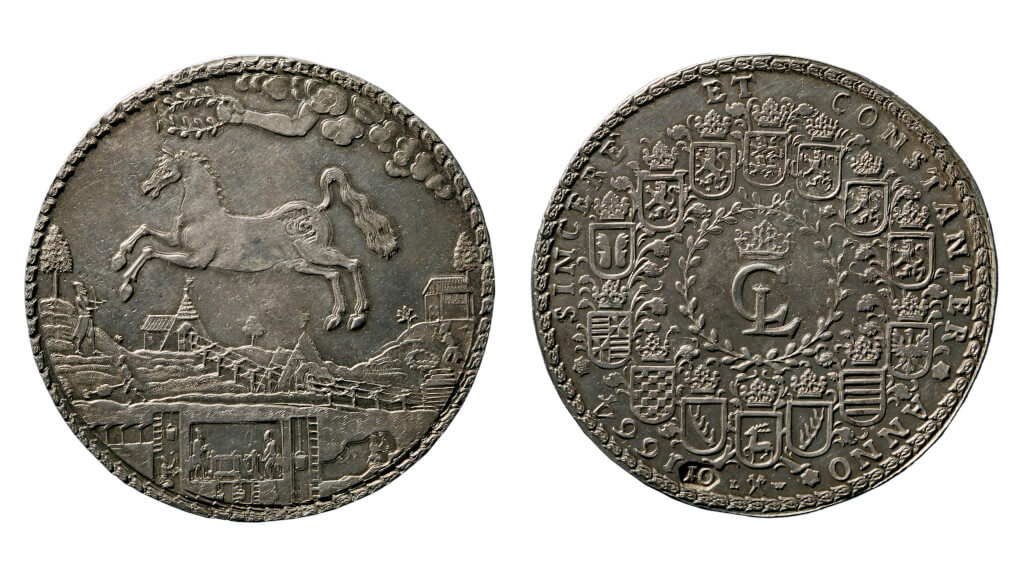 https://new.coinsweekly.com/wp-content/uploads/2020/04/04-1.jpg
574
1020
https://new.coinsweekly.com/wp-content/uploads/2023/01/logo-coinsweekly_590x204.png
2020-04-02 13:56:092023-09-20 08:28:38The Most Beautiful: Coins and Medals in the WeltenMuseum Hannover
https://new.coinsweekly.com/wp-content/uploads/2020/04/04-1.jpg
574
1020
https://new.coinsweekly.com/wp-content/uploads/2023/01/logo-coinsweekly_590x204.png
2020-04-02 13:56:092023-09-20 08:28:38The Most Beautiful: Coins and Medals in the WeltenMuseum Hannover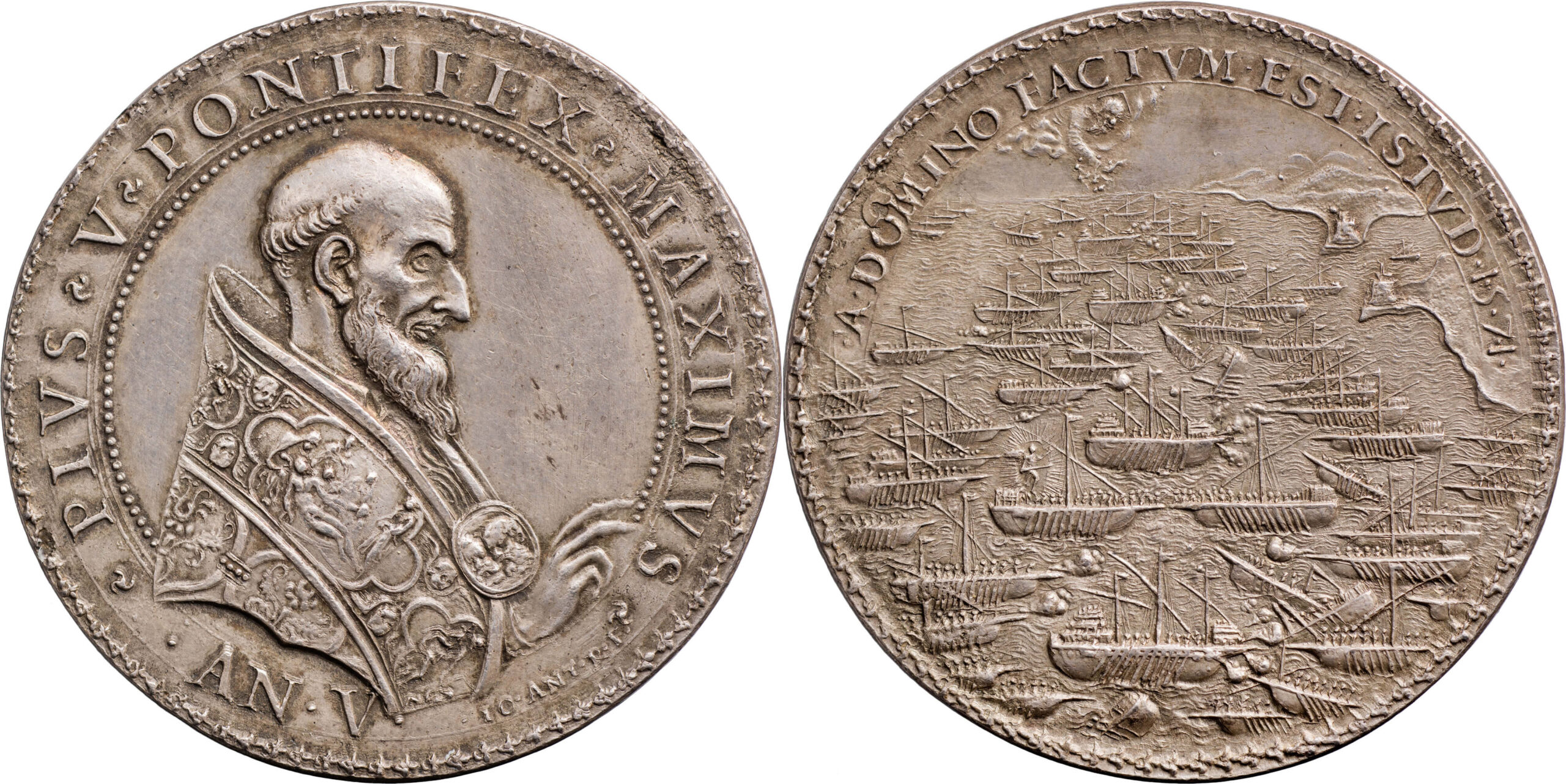 https://new.coinsweekly.com/wp-content/uploads/2020/03/01-14-scaled-1.jpg
1282
2560
https://new.coinsweekly.com/wp-content/uploads/2023/01/logo-coinsweekly_590x204.png
2020-03-26 11:30:452023-09-20 08:28:49The Most Beautiful: Papal Medals. Selected by Kay Ehling
https://new.coinsweekly.com/wp-content/uploads/2020/03/01-14-scaled-1.jpg
1282
2560
https://new.coinsweekly.com/wp-content/uploads/2023/01/logo-coinsweekly_590x204.png
2020-03-26 11:30:452023-09-20 08:28:49The Most Beautiful: Papal Medals. Selected by Kay Ehlingrecord auctions
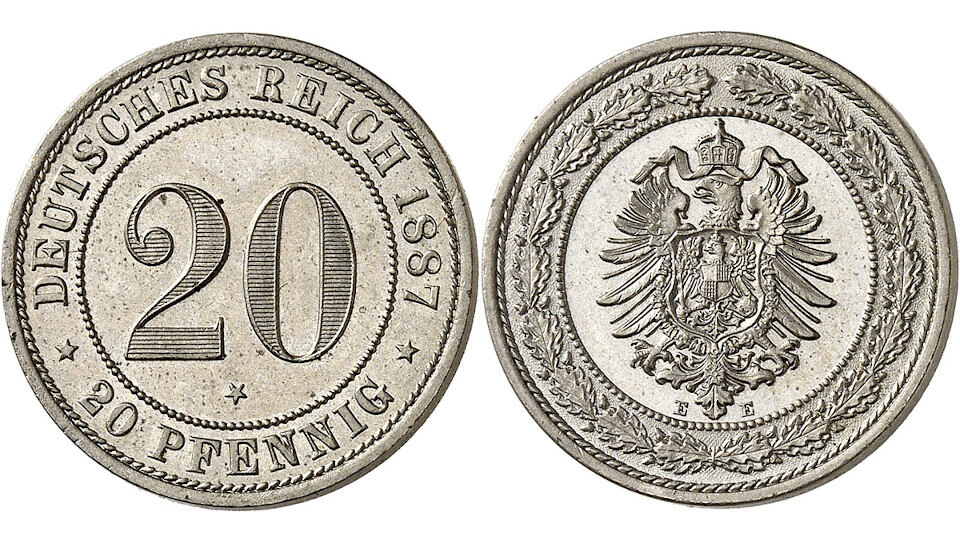 https://new.coinsweekly.com/wp-content/uploads/2021/06/02-16-1.jpg
540
960
https://new.coinsweekly.com/wp-content/uploads/2023/01/logo-coinsweekly_590x204.png
2021-07-01 13:56:232023-09-19 15:31:36Record Auction: Heidelberger Münzhandlung Grün 81 & 82
https://new.coinsweekly.com/wp-content/uploads/2021/06/02-16-1.jpg
540
960
https://new.coinsweekly.com/wp-content/uploads/2023/01/logo-coinsweekly_590x204.png
2021-07-01 13:56:232023-09-19 15:31:36Record Auction: Heidelberger Münzhandlung Grün 81 & 82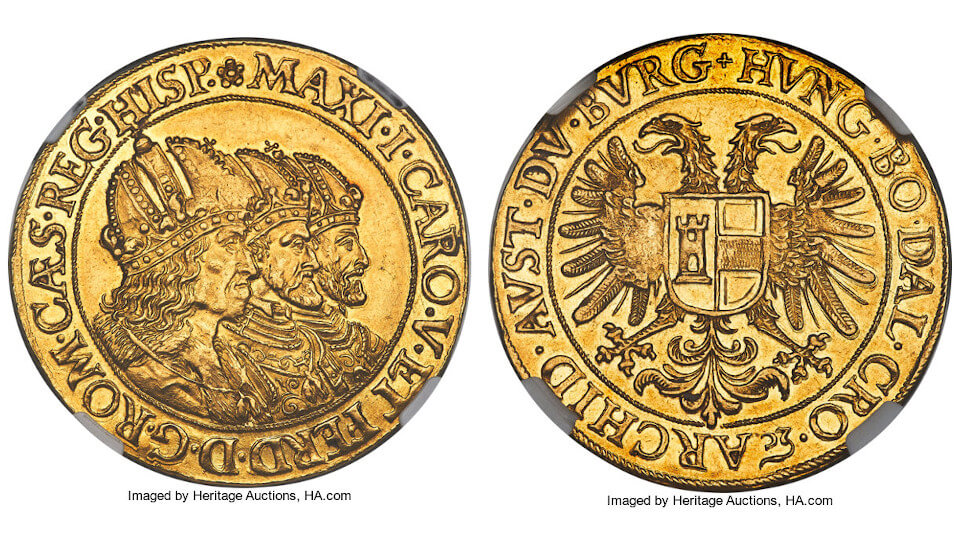 https://new.coinsweekly.com/wp-content/uploads/2021/05/06-2.jpg
540
960
https://new.coinsweekly.com/wp-content/uploads/2023/01/logo-coinsweekly_590x204.png
2021-05-06 14:00:462023-09-20 08:17:57Record Auction: The Paramount Collection
https://new.coinsweekly.com/wp-content/uploads/2021/05/06-2.jpg
540
960
https://new.coinsweekly.com/wp-content/uploads/2023/01/logo-coinsweekly_590x204.png
2021-05-06 14:00:462023-09-20 08:17:57Record Auction: The Paramount Collection https://new.coinsweekly.com/wp-content/uploads/2024/04/2024KW15Rekord_00.jpg
523
1000
Peter Terhorst
https://new.coinsweekly.com/wp-content/uploads/2023/01/logo-coinsweekly_590x204.png
Peter Terhorst2024-04-11 09:36:042024-04-11 09:48:28The Most Expensive: Bavarian Coins and Medals
https://new.coinsweekly.com/wp-content/uploads/2024/04/2024KW15Rekord_00.jpg
523
1000
Peter Terhorst
https://new.coinsweekly.com/wp-content/uploads/2023/01/logo-coinsweekly_590x204.png
Peter Terhorst2024-04-11 09:36:042024-04-11 09:48:28The Most Expensive: Bavarian Coins and Medals https://new.coinsweekly.com/wp-content/uploads/2023/12/2023KW49Rekord_07.jpg
486
1000
Peter Terhorst
https://new.coinsweekly.com/wp-content/uploads/2023/01/logo-coinsweekly_590x204.png
Peter Terhorst2023-12-07 10:43:552023-12-07 11:01:54The Most Expensive: Coins from the Ernestine Duchies
https://new.coinsweekly.com/wp-content/uploads/2023/12/2023KW49Rekord_07.jpg
486
1000
Peter Terhorst
https://new.coinsweekly.com/wp-content/uploads/2023/01/logo-coinsweekly_590x204.png
Peter Terhorst2023-12-07 10:43:552023-12-07 11:01:54The Most Expensive: Coins from the Ernestine Duchies https://new.coinsweekly.com/wp-content/uploads/2023/11/2023KW47Rekord07.jpg
500
1000
Peter Terhorst
https://new.coinsweekly.com/wp-content/uploads/2023/01/logo-coinsweekly_590x204.png
Peter Terhorst2023-11-23 10:19:002023-11-23 10:43:43The Most Expensive: Coins and Medals from Bulgaria
https://new.coinsweekly.com/wp-content/uploads/2023/11/2023KW47Rekord07.jpg
500
1000
Peter Terhorst
https://new.coinsweekly.com/wp-content/uploads/2023/01/logo-coinsweekly_590x204.png
Peter Terhorst2023-11-23 10:19:002023-11-23 10:43:43The Most Expensive: Coins and Medals from Bulgaria https://new.coinsweekly.com/wp-content/uploads/2022/10/02-38.jpg
540
960
https://new.coinsweekly.com/wp-content/uploads/2023/01/logo-coinsweekly_590x204.png
2022-10-27 08:47:072023-09-19 15:29:38The Most Expensive: Saxony-Albertine Coins
https://new.coinsweekly.com/wp-content/uploads/2022/10/02-38.jpg
540
960
https://new.coinsweekly.com/wp-content/uploads/2023/01/logo-coinsweekly_590x204.png
2022-10-27 08:47:072023-09-19 15:29:38The Most Expensive: Saxony-Albertine Coins https://new.coinsweekly.com/wp-content/uploads/2022/08/08-2.jpg
540
960
https://new.coinsweekly.com/wp-content/uploads/2023/01/logo-coinsweekly_590x204.png
2022-08-25 13:56:052023-09-19 15:30:47The Most Expensive: Coins from Czechoslovakia
https://new.coinsweekly.com/wp-content/uploads/2022/08/08-2.jpg
540
960
https://new.coinsweekly.com/wp-content/uploads/2023/01/logo-coinsweekly_590x204.png
2022-08-25 13:56:052023-09-19 15:30:47The Most Expensive: Coins from Czechoslovakia https://new.coinsweekly.com/wp-content/uploads/2022/06/06_image00833.jpg
540
960
https://new.coinsweekly.com/wp-content/uploads/2023/01/logo-coinsweekly_590x204.png
2022-06-16 13:56:482023-09-19 16:30:19The Most Expensive: Coins of the Swiss Confederation
https://new.coinsweekly.com/wp-content/uploads/2022/06/06_image00833.jpg
540
960
https://new.coinsweekly.com/wp-content/uploads/2023/01/logo-coinsweekly_590x204.png
2022-06-16 13:56:482023-09-19 16:30:19The Most Expensive: Coins of the Swiss Confederation https://new.coinsweekly.com/wp-content/uploads/2022/05/03_image03396.jpg
540
960
https://new.coinsweekly.com/wp-content/uploads/2023/01/logo-coinsweekly_590x204.png
2022-05-26 13:56:322023-09-20 08:15:52The Most Expensive: Coins and Medals of Modern Greece
https://new.coinsweekly.com/wp-content/uploads/2022/05/03_image03396.jpg
540
960
https://new.coinsweekly.com/wp-content/uploads/2023/01/logo-coinsweekly_590x204.png
2022-05-26 13:56:322023-09-20 08:15:52The Most Expensive: Coins and Medals of Modern Greece https://new.coinsweekly.com/wp-content/uploads/2022/04/06_image04412.jpg
540
960
https://new.coinsweekly.com/wp-content/uploads/2023/01/logo-coinsweekly_590x204.png
2022-04-21 13:56:072023-09-20 08:16:01The Most Expensive: Coins of the Netherlands
https://new.coinsweekly.com/wp-content/uploads/2022/04/06_image04412.jpg
540
960
https://new.coinsweekly.com/wp-content/uploads/2023/01/logo-coinsweekly_590x204.png
2022-04-21 13:56:072023-09-20 08:16:01The Most Expensive: Coins of the Netherlands https://new.coinsweekly.com/wp-content/uploads/2022/03/09-6.jpg
540
960
https://new.coinsweekly.com/wp-content/uploads/2023/01/logo-coinsweekly_590x204.png
2022-03-17 14:00:112023-09-20 08:16:10The Most Expensive: Coins in the World
https://new.coinsweekly.com/wp-content/uploads/2022/03/09-6.jpg
540
960
https://new.coinsweekly.com/wp-content/uploads/2023/01/logo-coinsweekly_590x204.png
2022-03-17 14:00:112023-09-20 08:16:10The Most Expensive: Coins in the World https://new.coinsweekly.com/wp-content/uploads/2022/01/07-6.jpg
540
960
https://new.coinsweekly.com/wp-content/uploads/2023/01/logo-coinsweekly_590x204.png
2022-01-27 13:56:072023-09-20 08:16:20The Most Expensive: Coins Sold in 2021
https://new.coinsweekly.com/wp-content/uploads/2022/01/07-6.jpg
540
960
https://new.coinsweekly.com/wp-content/uploads/2023/01/logo-coinsweekly_590x204.png
2022-01-27 13:56:072023-09-20 08:16:20The Most Expensive: Coins Sold in 2021 https://new.coinsweekly.com/wp-content/uploads/2020/10/09_image03264-2.jpg
540
960
https://new.coinsweekly.com/wp-content/uploads/2023/01/logo-coinsweekly_590x204.png
2021-10-14 13:56:032023-09-20 08:17:41The Most Expensive: Hohenzollern Coins and Medals
https://new.coinsweekly.com/wp-content/uploads/2020/10/09_image03264-2.jpg
540
960
https://new.coinsweekly.com/wp-content/uploads/2023/01/logo-coinsweekly_590x204.png
2021-10-14 13:56:032023-09-20 08:17:41The Most Expensive: Hohenzollern Coins and Medals https://new.coinsweekly.com/wp-content/uploads/2021/03/08-4.jpg
540
960
https://new.coinsweekly.com/wp-content/uploads/2023/01/logo-coinsweekly_590x204.png
2021-04-08 13:56:412023-09-20 08:18:07The Most Expensive: British Coins
https://new.coinsweekly.com/wp-content/uploads/2021/03/08-4.jpg
540
960
https://new.coinsweekly.com/wp-content/uploads/2023/01/logo-coinsweekly_590x204.png
2021-04-08 13:56:412023-09-20 08:18:07The Most Expensive: British Coins https://new.coinsweekly.com/wp-content/uploads/2021/01/03a.jpg
686
1600
https://new.coinsweekly.com/wp-content/uploads/2023/01/logo-coinsweekly_590x204.png
2021-01-28 13:56:522023-09-20 08:18:57The Most Expensive: US Banknotes Auctioned in 2020
https://new.coinsweekly.com/wp-content/uploads/2021/01/03a.jpg
686
1600
https://new.coinsweekly.com/wp-content/uploads/2023/01/logo-coinsweekly_590x204.png
2021-01-28 13:56:522023-09-20 08:18:57The Most Expensive: US Banknotes Auctioned in 2020 https://new.coinsweekly.com/wp-content/uploads/2021/01/08-6.jpg
540
960
https://new.coinsweekly.com/wp-content/uploads/2023/01/logo-coinsweekly_590x204.png
2021-01-21 13:56:072023-09-20 08:19:09The Most Expensive: US Coins Auctioned in 2020
https://new.coinsweekly.com/wp-content/uploads/2021/01/08-6.jpg
540
960
https://new.coinsweekly.com/wp-content/uploads/2023/01/logo-coinsweekly_590x204.png
2021-01-21 13:56:072023-09-20 08:19:09The Most Expensive: US Coins Auctioned in 2020 https://new.coinsweekly.com/wp-content/uploads/2020/11/PantikapaionStater-1.jpg
500
1000
https://new.coinsweekly.com/wp-content/uploads/2023/01/logo-coinsweekly_590x204.png
2020-11-19 13:56:302023-09-19 15:37:32The Most Expensive: Ancient Gold Coins
https://new.coinsweekly.com/wp-content/uploads/2020/11/PantikapaionStater-1.jpg
500
1000
https://new.coinsweekly.com/wp-content/uploads/2023/01/logo-coinsweekly_590x204.png
2020-11-19 13:56:302023-09-19 15:37:32The Most Expensive: Ancient Gold Coins https://new.coinsweekly.com/wp-content/uploads/2020/11/09-1.jpg
540
960
https://new.coinsweekly.com/wp-content/uploads/2023/01/logo-coinsweekly_590x204.png
2020-11-12 13:56:562023-09-20 08:20:09The Most Expensive: Coins of the German Empire
https://new.coinsweekly.com/wp-content/uploads/2020/11/09-1.jpg
540
960
https://new.coinsweekly.com/wp-content/uploads/2023/01/logo-coinsweekly_590x204.png
2020-11-12 13:56:562023-09-20 08:20:09The Most Expensive: Coins of the German Empire https://new.coinsweekly.com/wp-content/uploads/2020/10/02-20.jpg
540
960
https://new.coinsweekly.com/wp-content/uploads/2023/01/logo-coinsweekly_590x204.png
2020-10-22 13:56:092023-09-20 08:20:18The Most Expensive: Electrum Coins
https://new.coinsweekly.com/wp-content/uploads/2020/10/02-20.jpg
540
960
https://new.coinsweekly.com/wp-content/uploads/2023/01/logo-coinsweekly_590x204.png
2020-10-22 13:56:092023-09-20 08:20:18The Most Expensive: Electrum Coins https://new.coinsweekly.com/wp-content/uploads/2020/10/01-18.jpg
540
960
https://new.coinsweekly.com/wp-content/uploads/2023/01/logo-coinsweekly_590x204.png
2020-10-15 13:56:342023-09-20 08:20:27The Most Expensive: Double Talers of the Holy Roman Empire
https://new.coinsweekly.com/wp-content/uploads/2020/10/01-18.jpg
540
960
https://new.coinsweekly.com/wp-content/uploads/2023/01/logo-coinsweekly_590x204.png
2020-10-15 13:56:342023-09-20 08:20:27The Most Expensive: Double Talers of the Holy Roman Empire https://new.coinsweekly.com/wp-content/uploads/2020/07/10image00311-1.jpg
540
960
https://new.coinsweekly.com/wp-content/uploads/2023/01/logo-coinsweekly_590x204.png
2020-10-08 13:56:292023-09-20 08:20:38The Most Expensive: Talers of the Holy Roman Empire
https://new.coinsweekly.com/wp-content/uploads/2020/07/10image00311-1.jpg
540
960
https://new.coinsweekly.com/wp-content/uploads/2023/01/logo-coinsweekly_590x204.png
2020-10-08 13:56:292023-09-20 08:20:38The Most Expensive: Talers of the Holy Roman Empire https://new.coinsweekly.com/wp-content/uploads/2020/10/07-2.jpg
540
960
https://new.coinsweekly.com/wp-content/uploads/2023/01/logo-coinsweekly_590x204.png
2020-10-01 13:56:442023-09-20 08:21:29The Most Expensive: Medieval Bracteates
https://new.coinsweekly.com/wp-content/uploads/2020/10/07-2.jpg
540
960
https://new.coinsweekly.com/wp-content/uploads/2023/01/logo-coinsweekly_590x204.png
2020-10-01 13:56:442023-09-20 08:21:29The Most Expensive: Medieval Bracteates https://new.coinsweekly.com/wp-content/uploads/2020/09/03-15.jpg
540
960
https://new.coinsweekly.com/wp-content/uploads/2023/01/logo-coinsweekly_590x204.png
2020-09-17 13:56:542023-09-20 08:21:38The Most Expensive: Roman Denarii
https://new.coinsweekly.com/wp-content/uploads/2020/09/03-15.jpg
540
960
https://new.coinsweekly.com/wp-content/uploads/2023/01/logo-coinsweekly_590x204.png
2020-09-17 13:56:542023-09-20 08:21:38The Most Expensive: Roman Denarii https://new.coinsweekly.com/wp-content/uploads/2020/09/01-11.jpg
540
960
https://new.coinsweekly.com/wp-content/uploads/2023/01/logo-coinsweekly_590x204.png
2020-09-10 13:56:142023-09-20 08:21:47The Most Expensive: Tetradrachms
https://new.coinsweekly.com/wp-content/uploads/2020/09/01-11.jpg
540
960
https://new.coinsweekly.com/wp-content/uploads/2023/01/logo-coinsweekly_590x204.png
2020-09-10 13:56:142023-09-20 08:21:47The Most Expensive: Tetradrachms https://new.coinsweekly.com/wp-content/uploads/2020/09/08.jpg
540
960
https://new.coinsweekly.com/wp-content/uploads/2023/01/logo-coinsweekly_590x204.png
2020-09-03 13:56:262023-09-20 08:22:33The Most Expensive: Russian Coins
https://new.coinsweekly.com/wp-content/uploads/2020/09/08.jpg
540
960
https://new.coinsweekly.com/wp-content/uploads/2023/01/logo-coinsweekly_590x204.png
2020-09-03 13:56:262023-09-20 08:22:33The Most Expensive: Russian Coins https://new.coinsweekly.com/wp-content/uploads/2020/08/10-2.jpg
540
960
https://new.coinsweekly.com/wp-content/uploads/2023/01/logo-coinsweekly_590x204.png
2020-08-27 13:56:372023-09-20 08:22:42The Most Expensive: Sestertii
https://new.coinsweekly.com/wp-content/uploads/2020/08/10-2.jpg
540
960
https://new.coinsweekly.com/wp-content/uploads/2023/01/logo-coinsweekly_590x204.png
2020-08-27 13:56:372023-09-20 08:22:42The Most Expensive: Sestertii https://new.coinsweekly.com/wp-content/uploads/2020/07/10image00196.jpg
540
960
https://new.coinsweekly.com/wp-content/uploads/2023/01/logo-coinsweekly_590x204.png
2020-07-30 13:56:452023-09-20 08:22:51The Most Expensive: Renaissance Medals
https://new.coinsweekly.com/wp-content/uploads/2020/07/10image00196.jpg
540
960
https://new.coinsweekly.com/wp-content/uploads/2023/01/logo-coinsweekly_590x204.png
2020-07-30 13:56:452023-09-20 08:22:51The Most Expensive: Renaissance Medals https://new.coinsweekly.com/wp-content/uploads/2020/07/10image00023-1.jpg
540
960
https://new.coinsweekly.com/wp-content/uploads/2023/01/logo-coinsweekly_590x204.png
2020-07-16 13:54:192023-09-20 08:23:55The Most Expensive: Aurei
https://new.coinsweekly.com/wp-content/uploads/2020/07/10image00023-1.jpg
540
960
https://new.coinsweekly.com/wp-content/uploads/2023/01/logo-coinsweekly_590x204.png
2020-07-16 13:54:192023-09-20 08:23:55The Most Expensive: Aurei https://new.coinsweekly.com/wp-content/uploads/2023/11/2023KW44Rekord_00.jpg
500
1000
Peter Terhorst
https://new.coinsweekly.com/wp-content/uploads/2023/01/logo-coinsweekly_590x204.png
Peter Terhorst2023-11-02 14:03:572023-11-02 14:09:33The Most Beautiful: British Celtic Coins Selected by Tim Wright
https://new.coinsweekly.com/wp-content/uploads/2023/11/2023KW44Rekord_00.jpg
500
1000
Peter Terhorst
https://new.coinsweekly.com/wp-content/uploads/2023/01/logo-coinsweekly_590x204.png
Peter Terhorst2023-11-02 14:03:572023-11-02 14:09:33The Most Beautiful: British Celtic Coins Selected by Tim Wright https://new.coinsweekly.com/wp-content/uploads/2020/07/08-3.jpg
540
960
https://new.coinsweekly.com/wp-content/uploads/2023/01/logo-coinsweekly_590x204.png
2020-07-09 13:56:262023-09-20 08:24:11The Most Beautiful: Judaic Medals Selected by Mel Wacks
https://new.coinsweekly.com/wp-content/uploads/2020/07/08-3.jpg
540
960
https://new.coinsweekly.com/wp-content/uploads/2023/01/logo-coinsweekly_590x204.png
2020-07-09 13:56:262023-09-20 08:24:11The Most Beautiful: Judaic Medals Selected by Mel Wacks https://new.coinsweekly.com/wp-content/uploads/2020/06/01Syracuse-2.jpg
540
960
https://new.coinsweekly.com/wp-content/uploads/2023/01/logo-coinsweekly_590x204.png
2020-06-11 13:56:182023-09-20 08:24:25The Most Beautiful: Coins Featuring Women Selected by Alain Baron and Philippe Veuve
https://new.coinsweekly.com/wp-content/uploads/2020/06/01Syracuse-2.jpg
540
960
https://new.coinsweekly.com/wp-content/uploads/2023/01/logo-coinsweekly_590x204.png
2020-06-11 13:56:182023-09-20 08:24:25The Most Beautiful: Coins Featuring Women Selected by Alain Baron and Philippe Veuve https://new.coinsweekly.com/wp-content/uploads/2020/05/03_00588q00.jpg
540
960
https://new.coinsweekly.com/wp-content/uploads/2023/01/logo-coinsweekly_590x204.png
2020-05-28 13:56:432023-09-20 08:25:39The Most Beautiful: Roman Coins Selected by Yves Gunzenreiner
https://new.coinsweekly.com/wp-content/uploads/2020/05/03_00588q00.jpg
540
960
https://new.coinsweekly.com/wp-content/uploads/2023/01/logo-coinsweekly_590x204.png
2020-05-28 13:56:432023-09-20 08:25:39The Most Beautiful: Roman Coins Selected by Yves Gunzenreiner https://new.coinsweekly.com/wp-content/uploads/2020/05/09-5.jpg
540
960
https://new.coinsweekly.com/wp-content/uploads/2023/01/logo-coinsweekly_590x204.png
2020-05-21 13:56:192023-09-19 16:07:32The Most Beautiful: Talers from the City of Zurich, selected by Ruedi Kunzmann
https://new.coinsweekly.com/wp-content/uploads/2020/05/09-5.jpg
540
960
https://new.coinsweekly.com/wp-content/uploads/2023/01/logo-coinsweekly_590x204.png
2020-05-21 13:56:192023-09-19 16:07:32The Most Beautiful: Talers from the City of Zurich, selected by Ruedi Kunzmann https://new.coinsweekly.com/wp-content/uploads/2020/05/02_set-mit-5-x-25-4562431-O.jpg
540
960
https://new.coinsweekly.com/wp-content/uploads/2023/01/logo-coinsweekly_590x204.png
2020-05-14 13:56:042023-09-06 11:46:18The Most Beautiful: Chinese Coins After 1970 Selected by Werner Höpker
https://new.coinsweekly.com/wp-content/uploads/2020/05/02_set-mit-5-x-25-4562431-O.jpg
540
960
https://new.coinsweekly.com/wp-content/uploads/2023/01/logo-coinsweekly_590x204.png
2020-05-14 13:56:042023-09-06 11:46:18The Most Beautiful: Chinese Coins After 1970 Selected by Werner Höpker https://new.coinsweekly.com/wp-content/uploads/2020/05/01a-1.jpg
1080
1920
https://new.coinsweekly.com/wp-content/uploads/2023/01/logo-coinsweekly_590x204.png
2020-05-07 13:56:002023-09-20 08:26:56The Most Beautiful: Coins of Bremen Selected by Claus Müller
https://new.coinsweekly.com/wp-content/uploads/2020/05/01a-1.jpg
1080
1920
https://new.coinsweekly.com/wp-content/uploads/2023/01/logo-coinsweekly_590x204.png
2020-05-07 13:56:002023-09-20 08:26:56The Most Beautiful: Coins of Bremen Selected by Claus Müller https://new.coinsweekly.com/wp-content/uploads/2020/04/02-32.jpg
540
960
https://new.coinsweekly.com/wp-content/uploads/2023/01/logo-coinsweekly_590x204.png
2020-04-30 13:56:252023-09-20 08:27:07The Most Beautiful: Coins from the Bibliothèque nationale de France. Selected by Frédérique Duyrat
https://new.coinsweekly.com/wp-content/uploads/2020/04/02-32.jpg
540
960
https://new.coinsweekly.com/wp-content/uploads/2023/01/logo-coinsweekly_590x204.png
2020-04-30 13:56:252023-09-20 08:27:07The Most Beautiful: Coins from the Bibliothèque nationale de France. Selected by Frédérique Duyrat https://new.coinsweekly.com/wp-content/uploads/2020/04/01-13-1.jpg
540
960
https://new.coinsweekly.com/wp-content/uploads/2023/01/logo-coinsweekly_590x204.png
2020-04-16 13:56:492023-09-20 08:27:20The Most Beautiful: Hellenistic Royal Coins. Selected by Peter van Alfen
https://new.coinsweekly.com/wp-content/uploads/2020/04/01-13-1.jpg
540
960
https://new.coinsweekly.com/wp-content/uploads/2023/01/logo-coinsweekly_590x204.png
2020-04-16 13:56:492023-09-20 08:27:20The Most Beautiful: Hellenistic Royal Coins. Selected by Peter van Alfen https://new.coinsweekly.com/wp-content/uploads/2020/04/02-12.jpg
540
960
https://new.coinsweekly.com/wp-content/uploads/2023/01/logo-coinsweekly_590x204.png
2020-04-09 13:56:162023-09-20 08:28:26The Most Beautiful: Coins in Vienna. Selected by Curators of the Coin Collection
https://new.coinsweekly.com/wp-content/uploads/2020/04/02-12.jpg
540
960
https://new.coinsweekly.com/wp-content/uploads/2023/01/logo-coinsweekly_590x204.png
2020-04-09 13:56:162023-09-20 08:28:26The Most Beautiful: Coins in Vienna. Selected by Curators of the Coin Collection https://new.coinsweekly.com/wp-content/uploads/2020/04/04-1.jpg
574
1020
https://new.coinsweekly.com/wp-content/uploads/2023/01/logo-coinsweekly_590x204.png
2020-04-02 13:56:092023-09-20 08:28:38The Most Beautiful: Coins and Medals in the WeltenMuseum Hannover
https://new.coinsweekly.com/wp-content/uploads/2020/04/04-1.jpg
574
1020
https://new.coinsweekly.com/wp-content/uploads/2023/01/logo-coinsweekly_590x204.png
2020-04-02 13:56:092023-09-20 08:28:38The Most Beautiful: Coins and Medals in the WeltenMuseum Hannover https://new.coinsweekly.com/wp-content/uploads/2020/03/01-14-scaled-1.jpg
1282
2560
https://new.coinsweekly.com/wp-content/uploads/2023/01/logo-coinsweekly_590x204.png
2020-03-26 11:30:452023-09-20 08:28:49The Most Beautiful: Papal Medals. Selected by Kay Ehling
https://new.coinsweekly.com/wp-content/uploads/2020/03/01-14-scaled-1.jpg
1282
2560
https://new.coinsweekly.com/wp-content/uploads/2023/01/logo-coinsweekly_590x204.png
2020-03-26 11:30:452023-09-20 08:28:49The Most Beautiful: Papal Medals. Selected by Kay Ehling https://new.coinsweekly.com/wp-content/uploads/2021/06/02-16-1.jpg
540
960
https://new.coinsweekly.com/wp-content/uploads/2023/01/logo-coinsweekly_590x204.png
2021-07-01 13:56:232023-09-19 15:31:36Record Auction: Heidelberger Münzhandlung Grün 81 & 82
https://new.coinsweekly.com/wp-content/uploads/2021/06/02-16-1.jpg
540
960
https://new.coinsweekly.com/wp-content/uploads/2023/01/logo-coinsweekly_590x204.png
2021-07-01 13:56:232023-09-19 15:31:36Record Auction: Heidelberger Münzhandlung Grün 81 & 82 https://new.coinsweekly.com/wp-content/uploads/2021/05/06-2.jpg
540
960
https://new.coinsweekly.com/wp-content/uploads/2023/01/logo-coinsweekly_590x204.png
2021-05-06 14:00:462023-09-20 08:17:57Record Auction: The Paramount Collection
https://new.coinsweekly.com/wp-content/uploads/2021/05/06-2.jpg
540
960
https://new.coinsweekly.com/wp-content/uploads/2023/01/logo-coinsweekly_590x204.png
2021-05-06 14:00:462023-09-20 08:17:57Record Auction: The Paramount Collection




